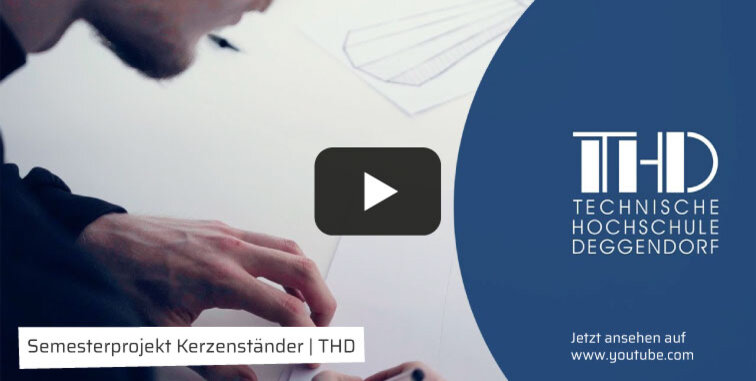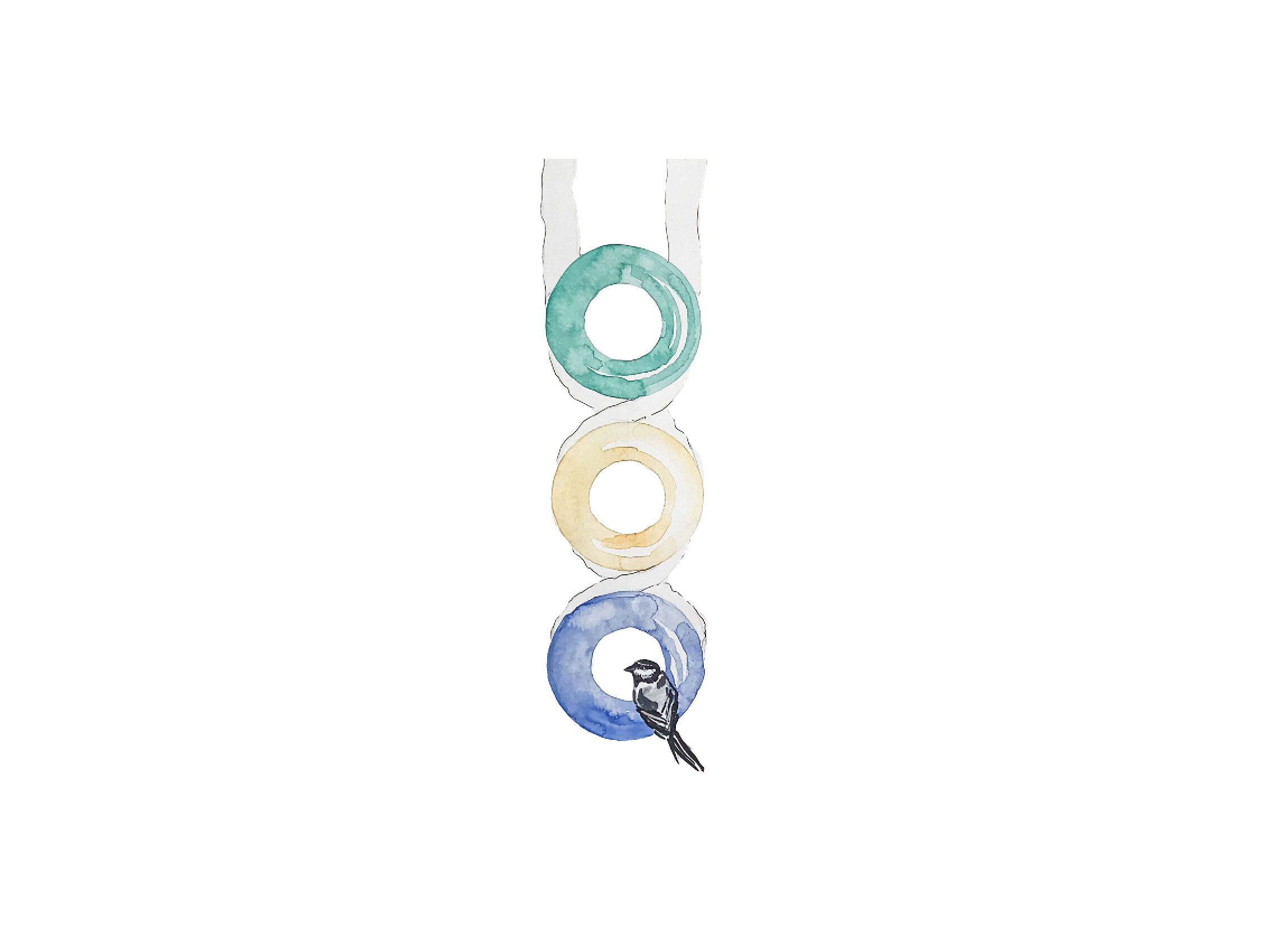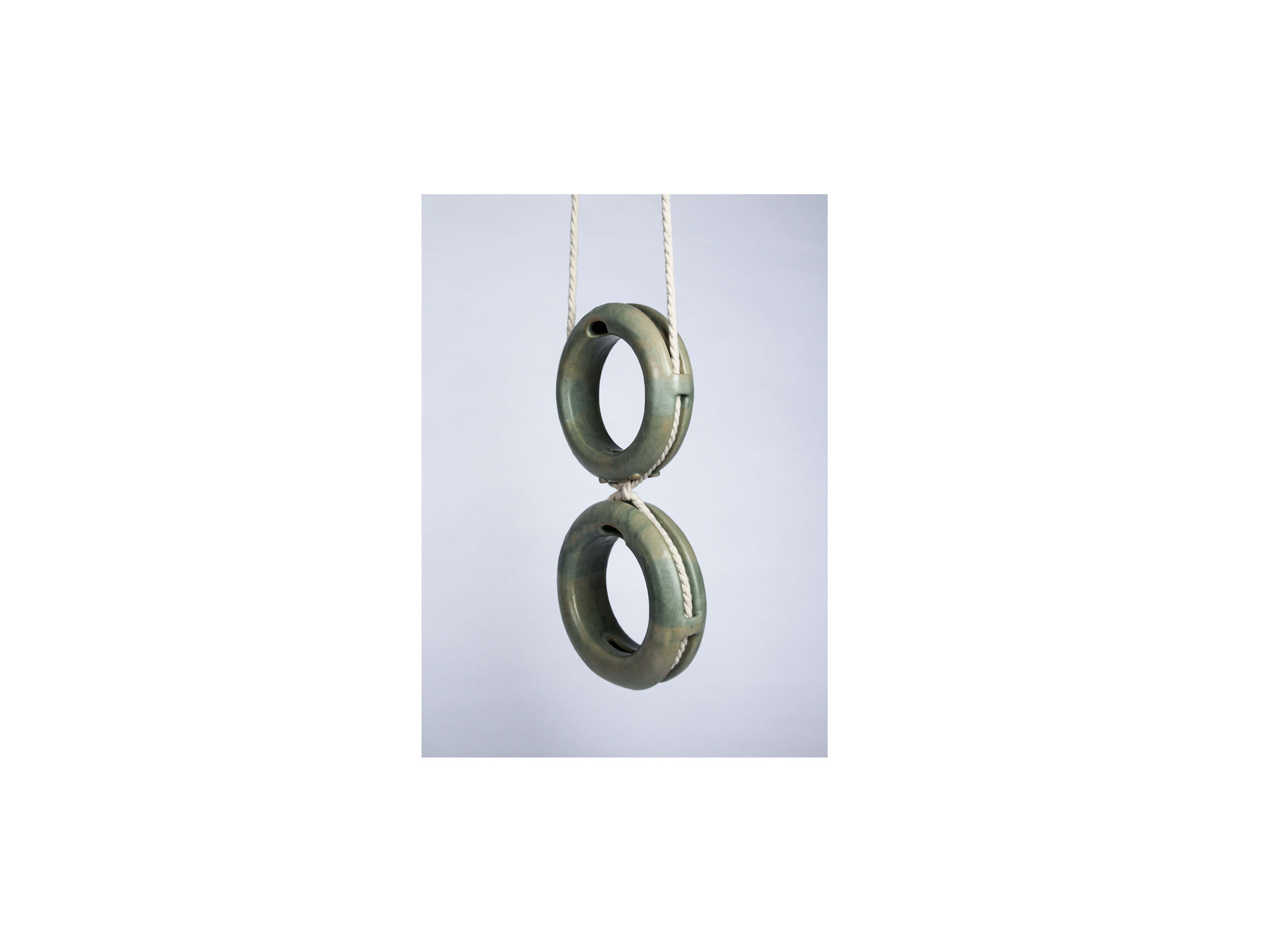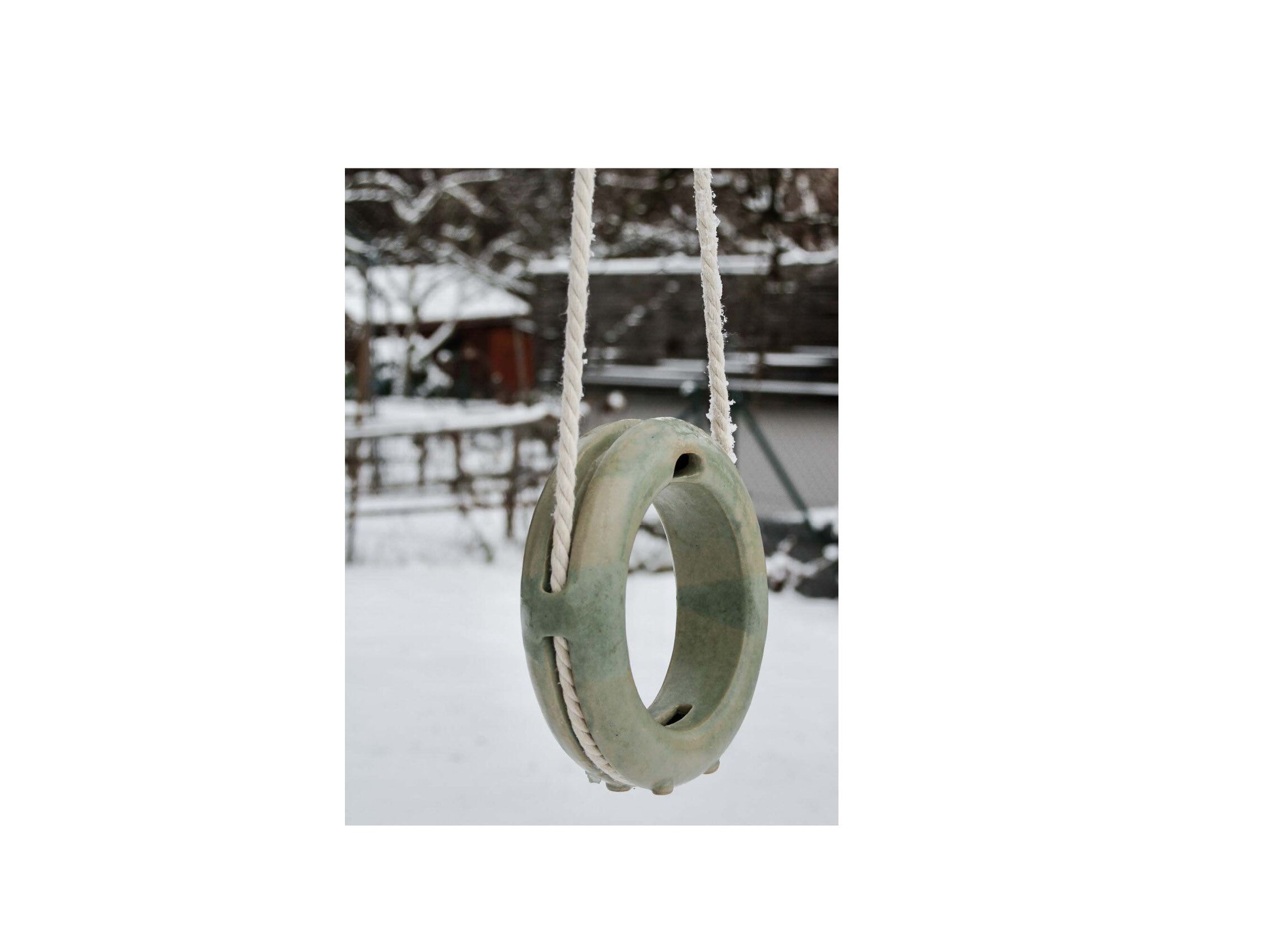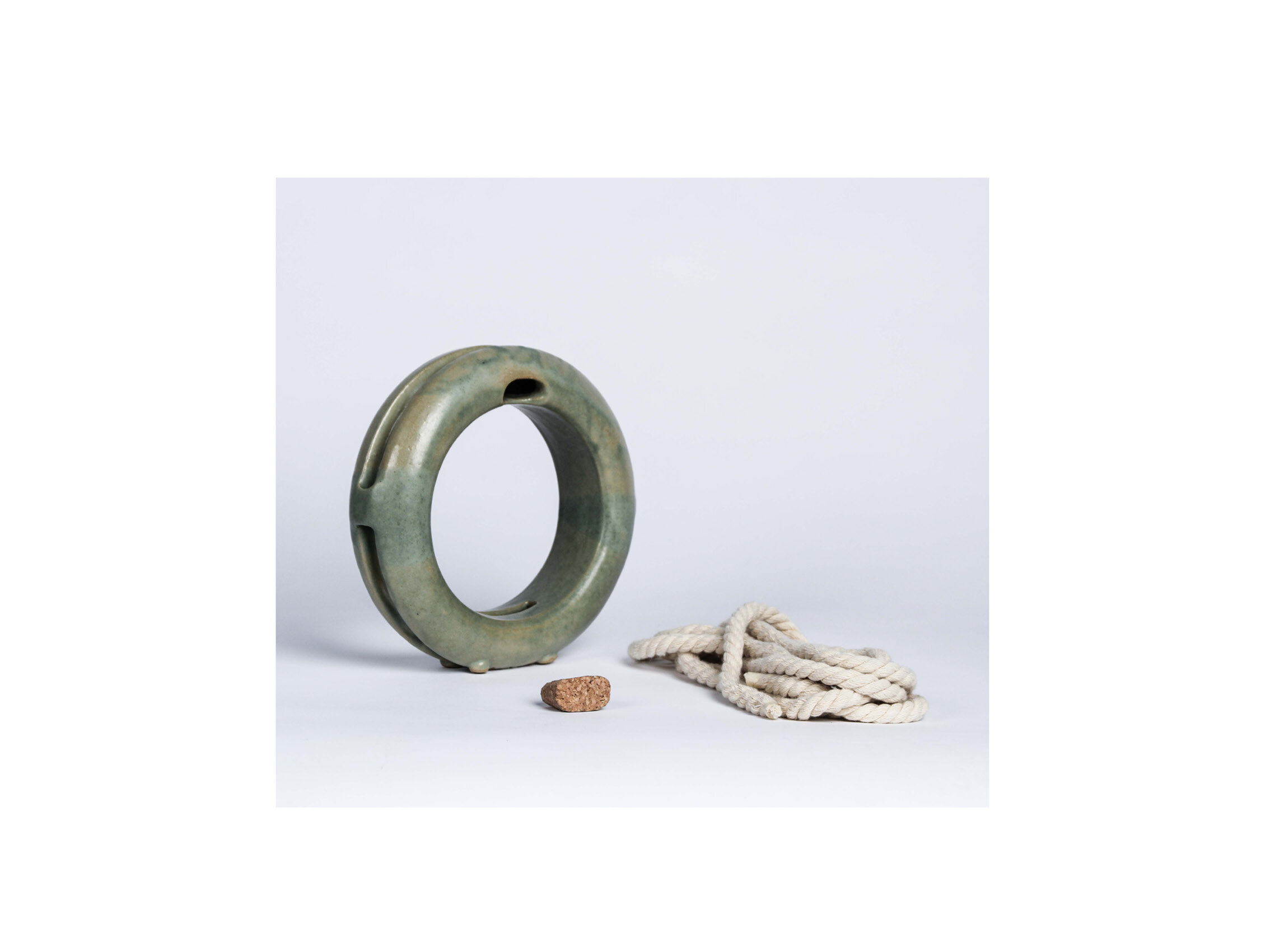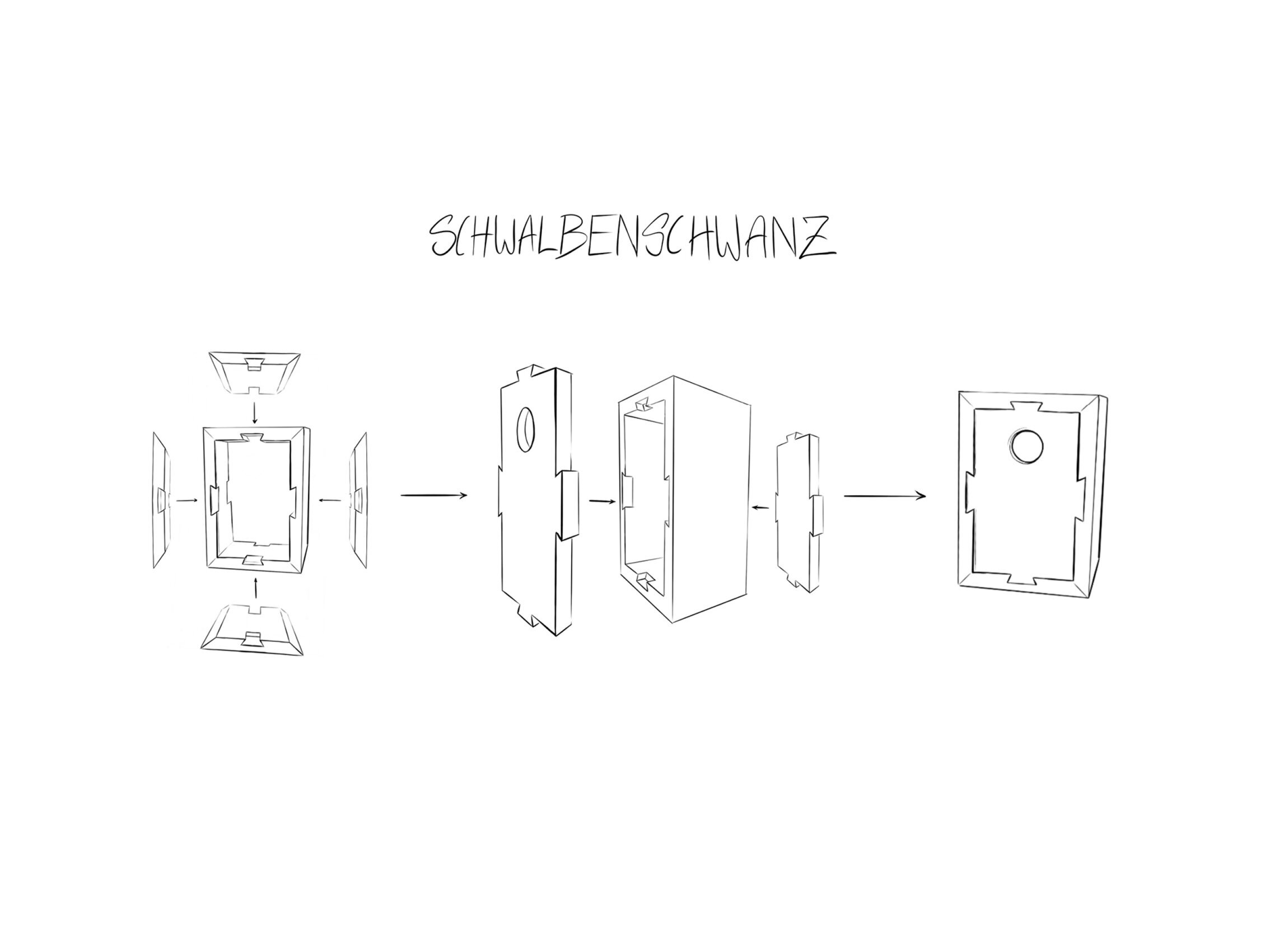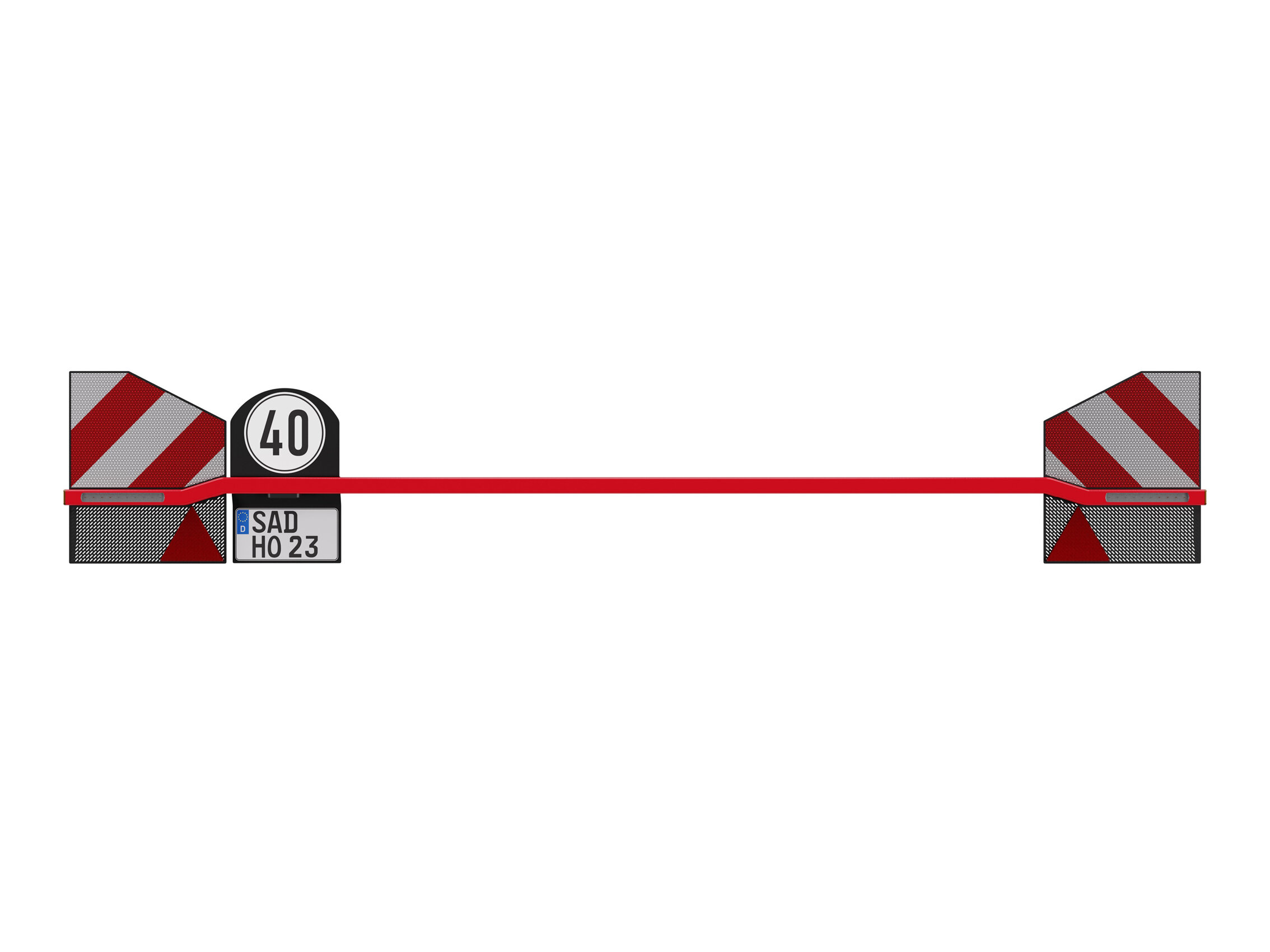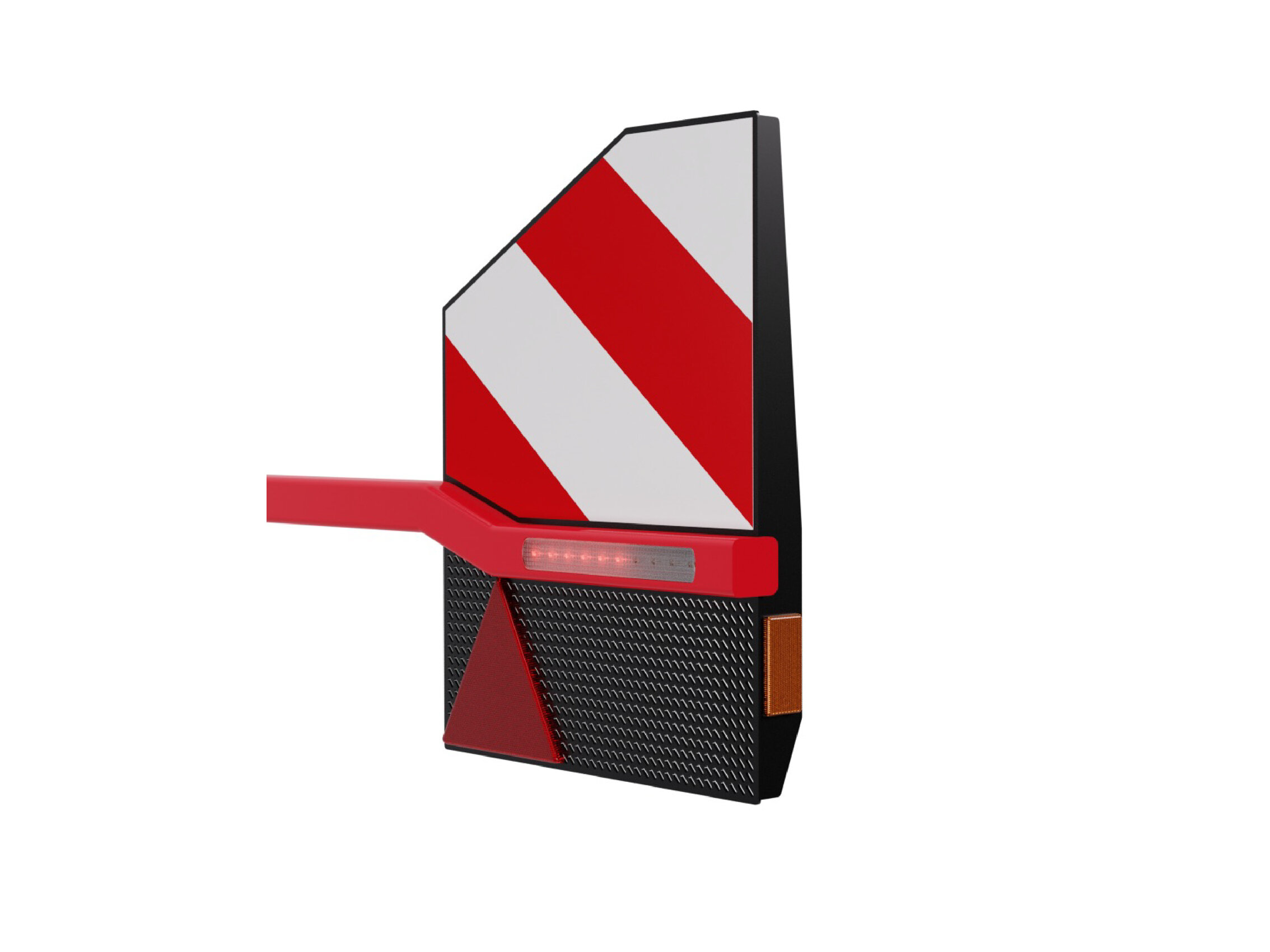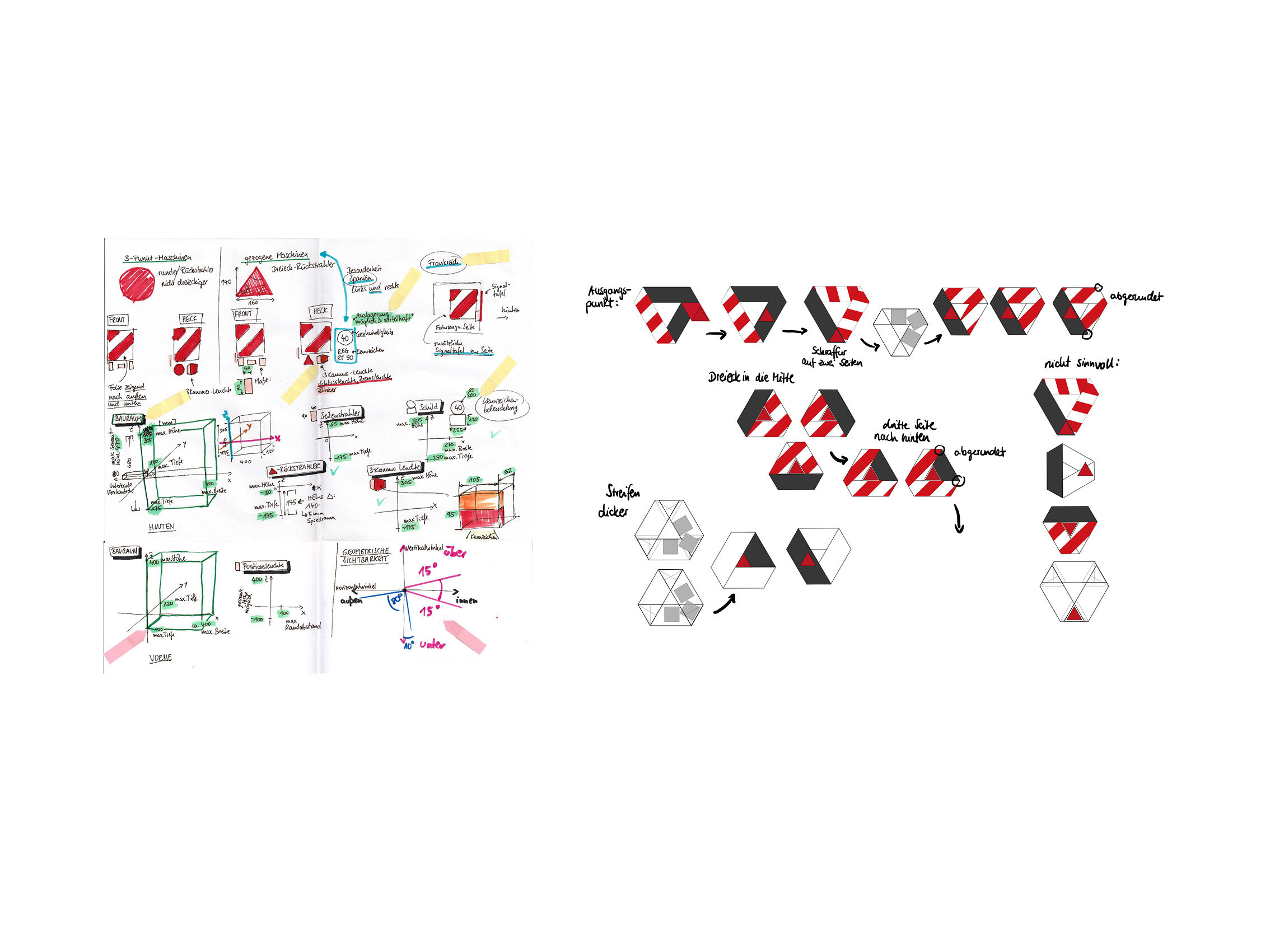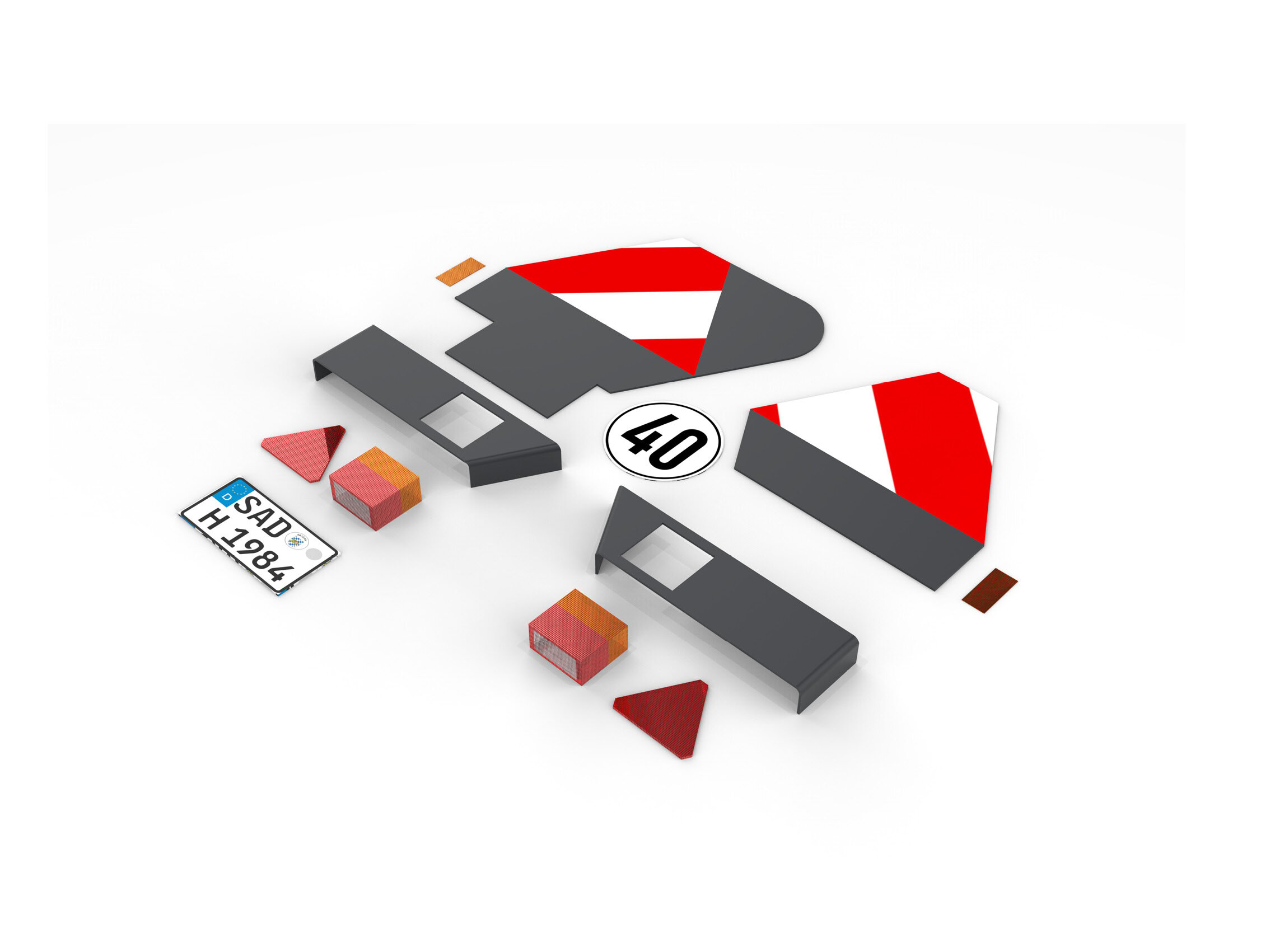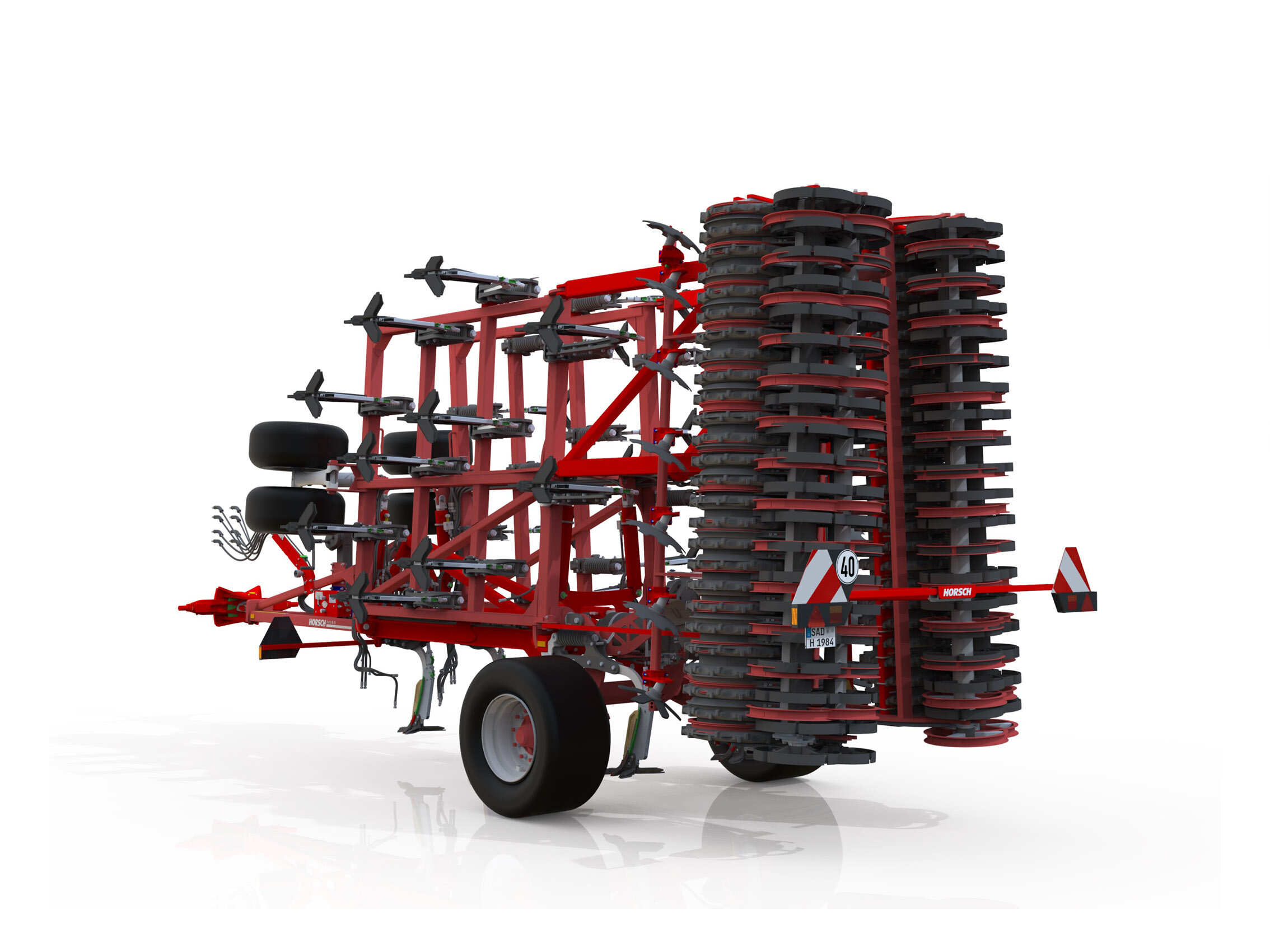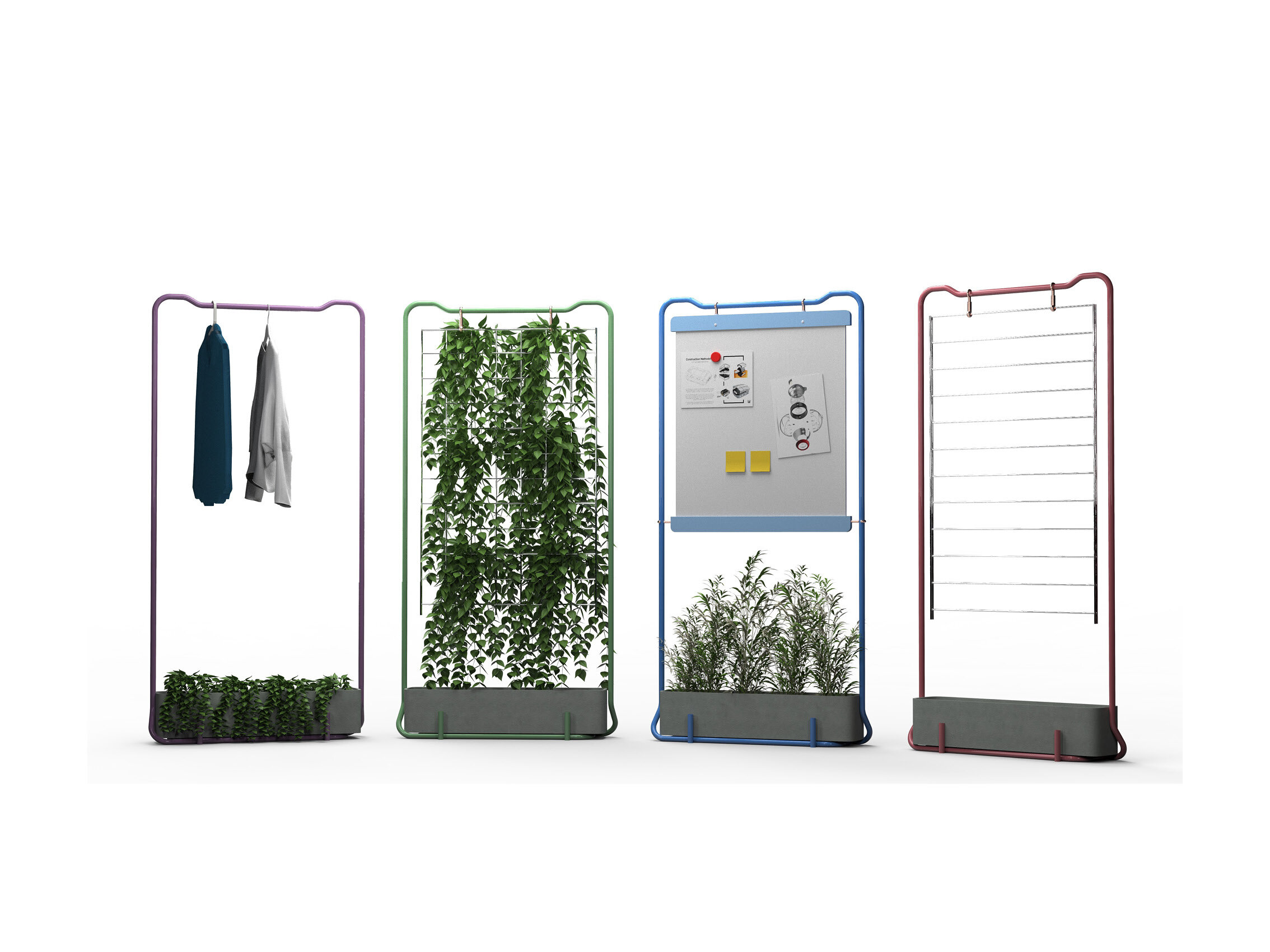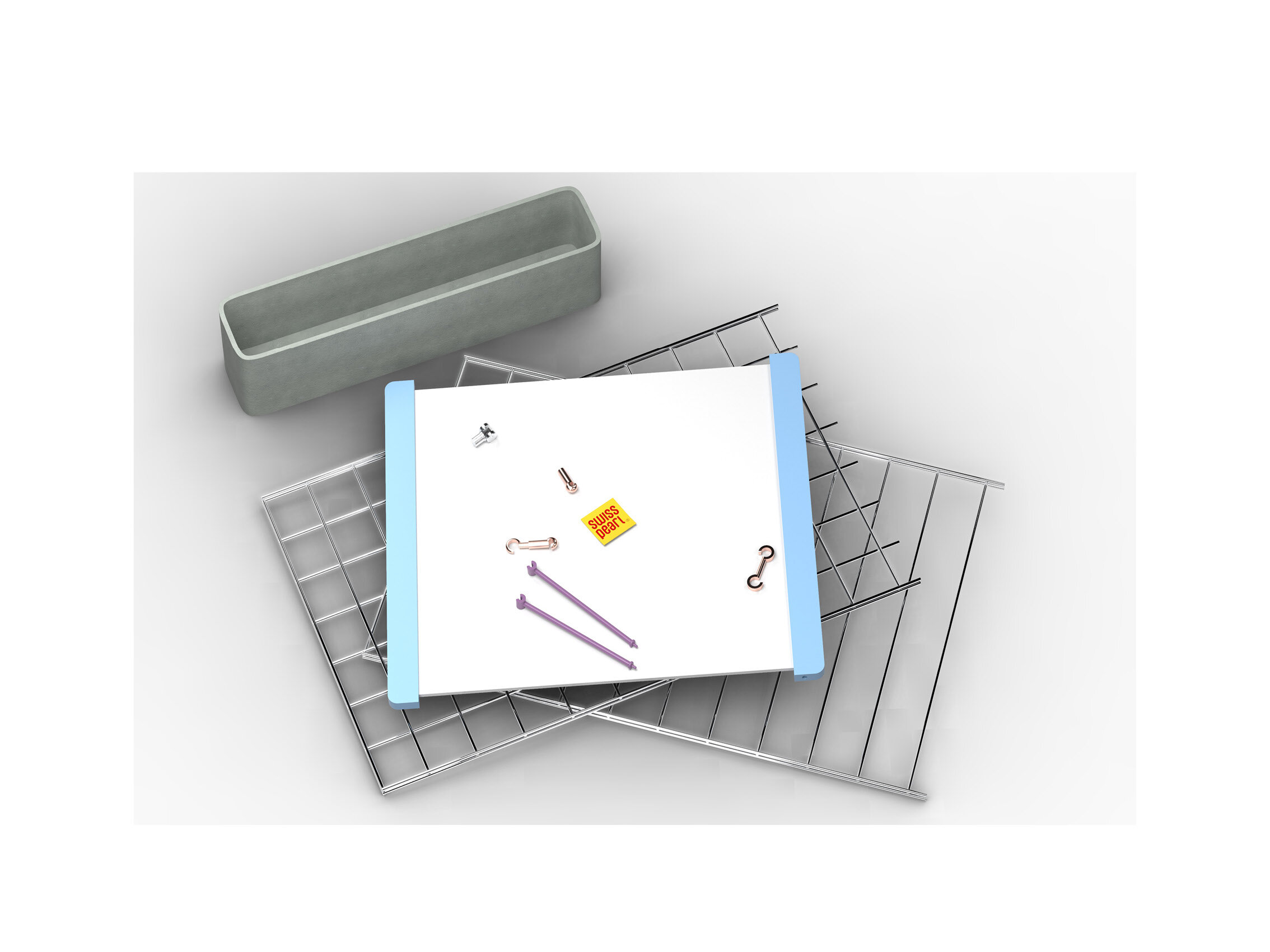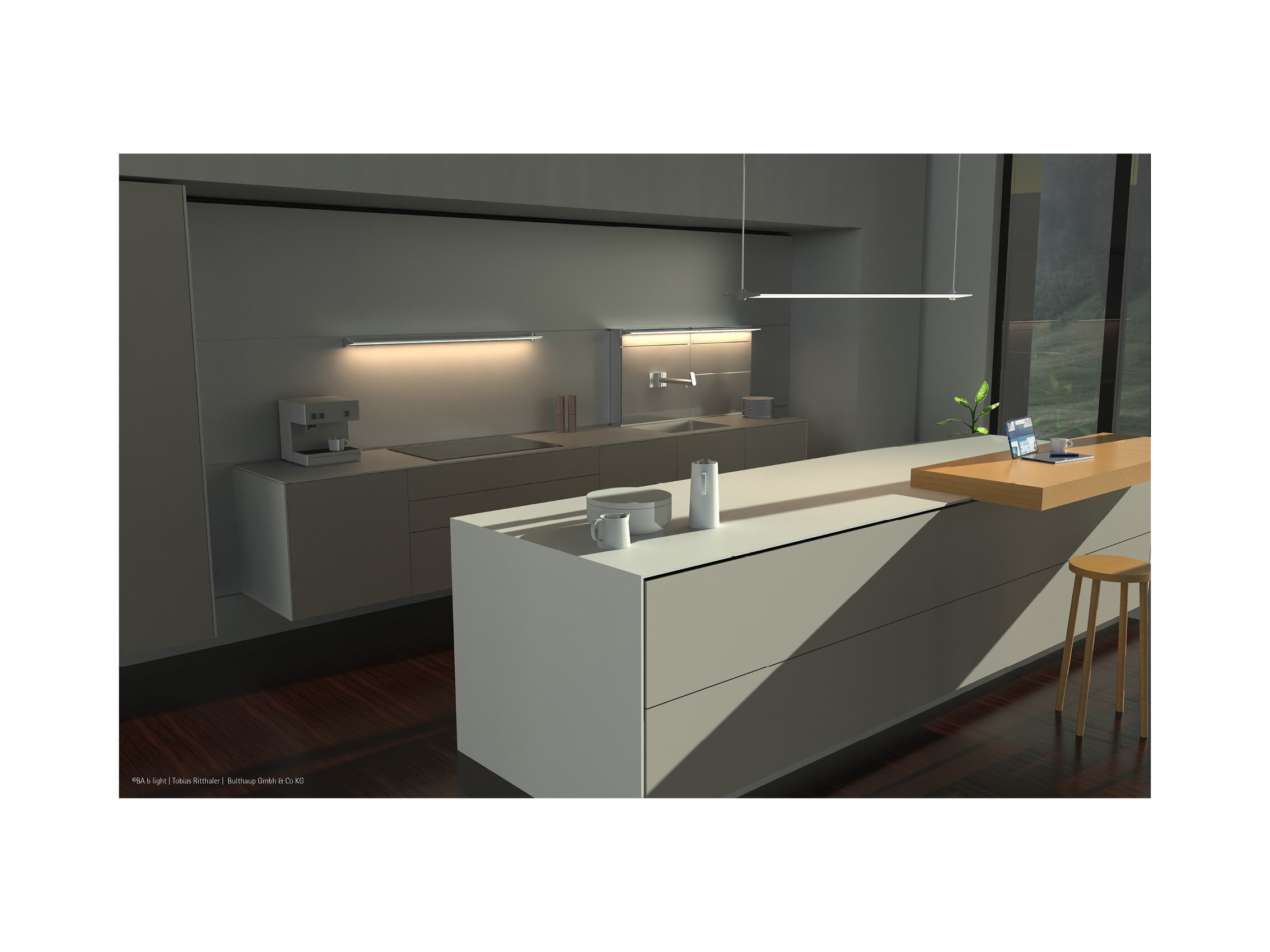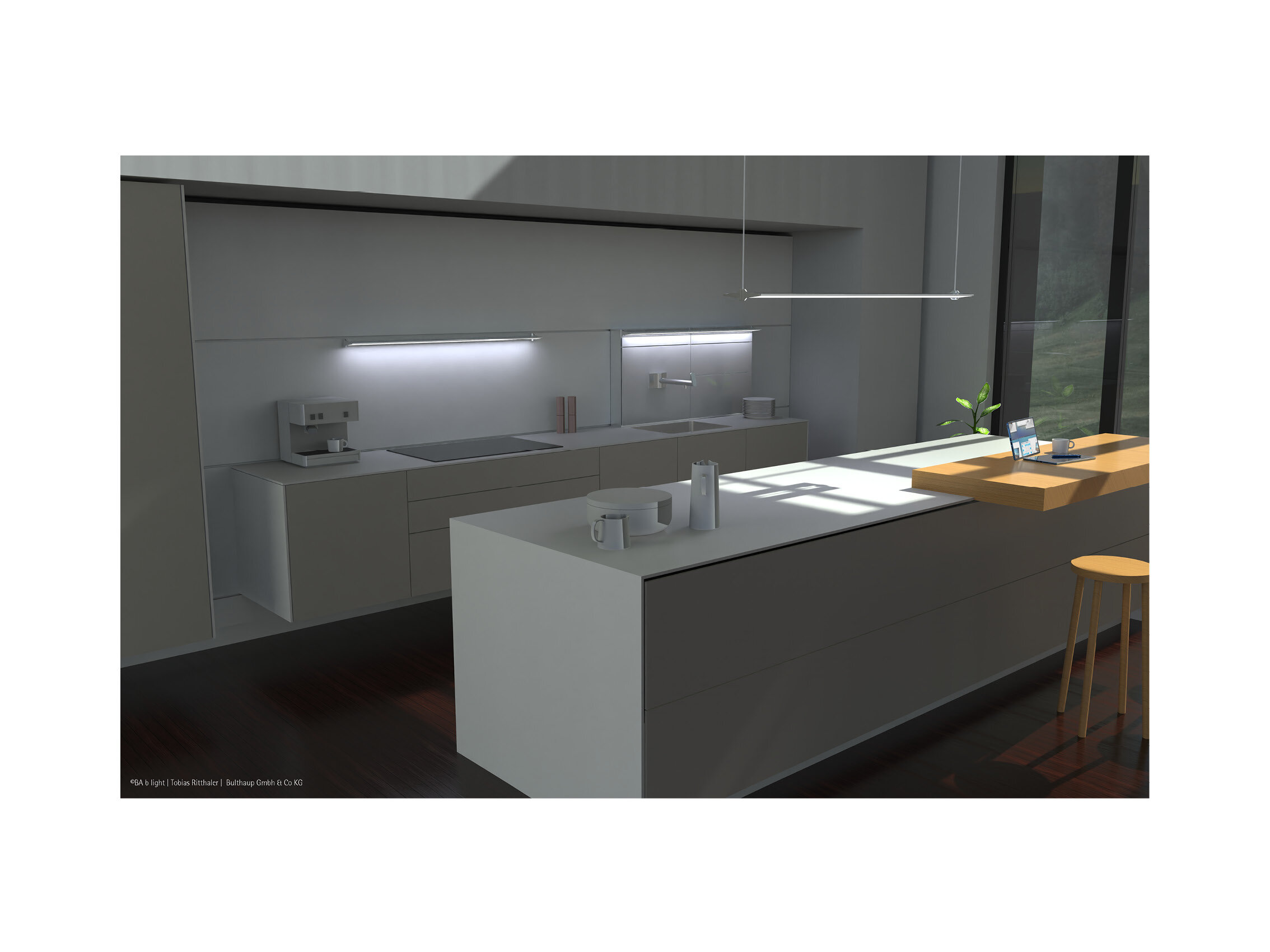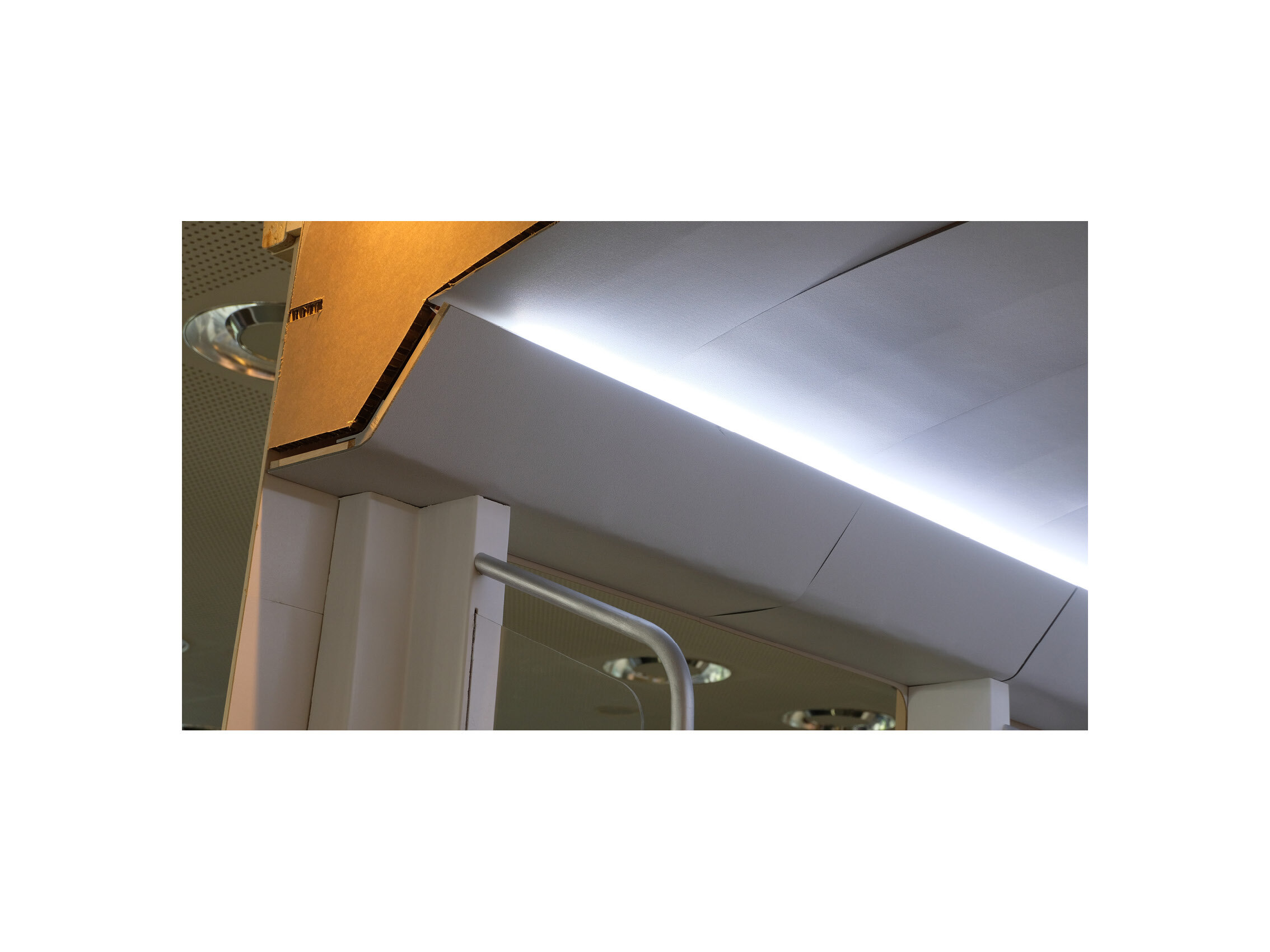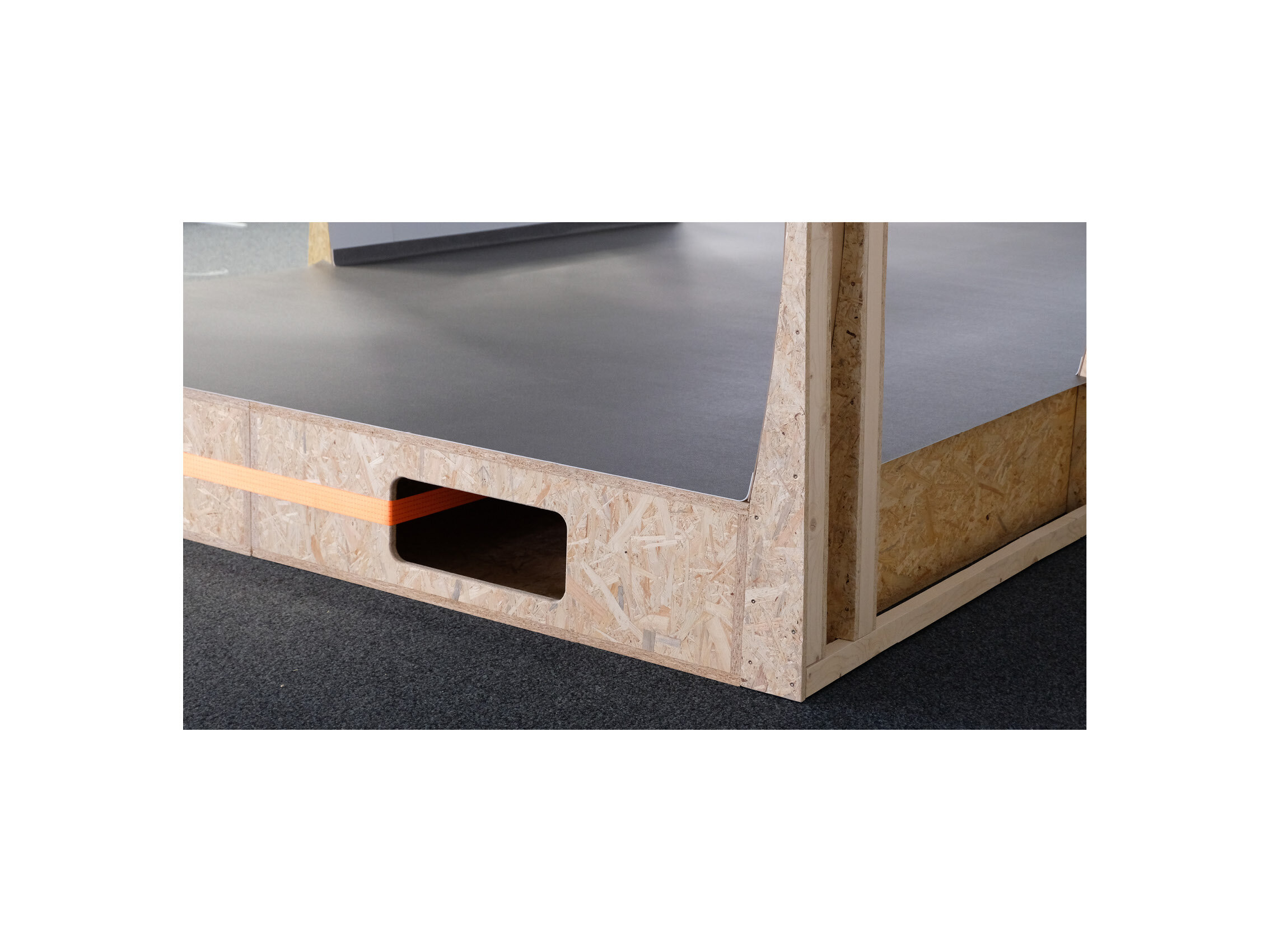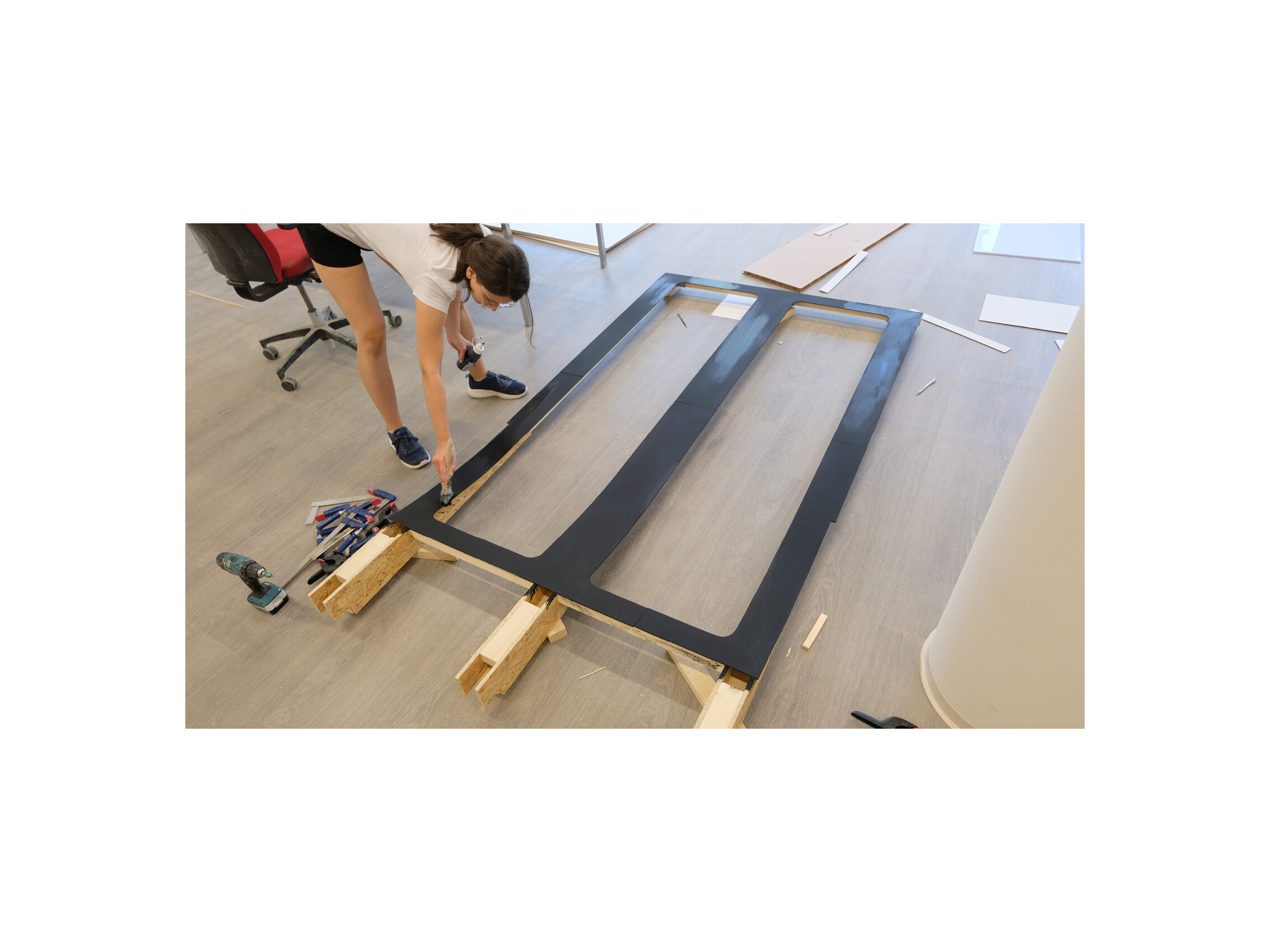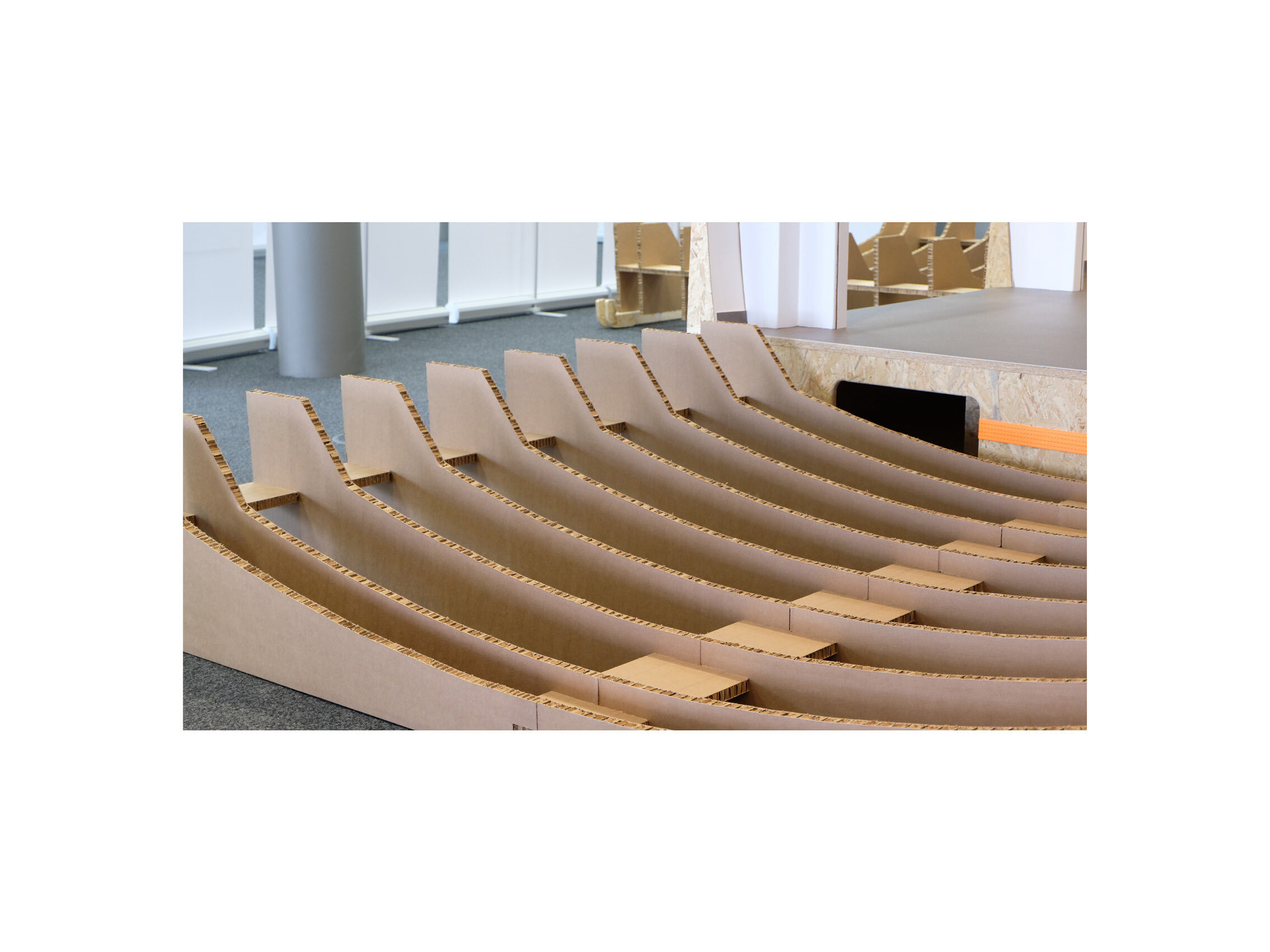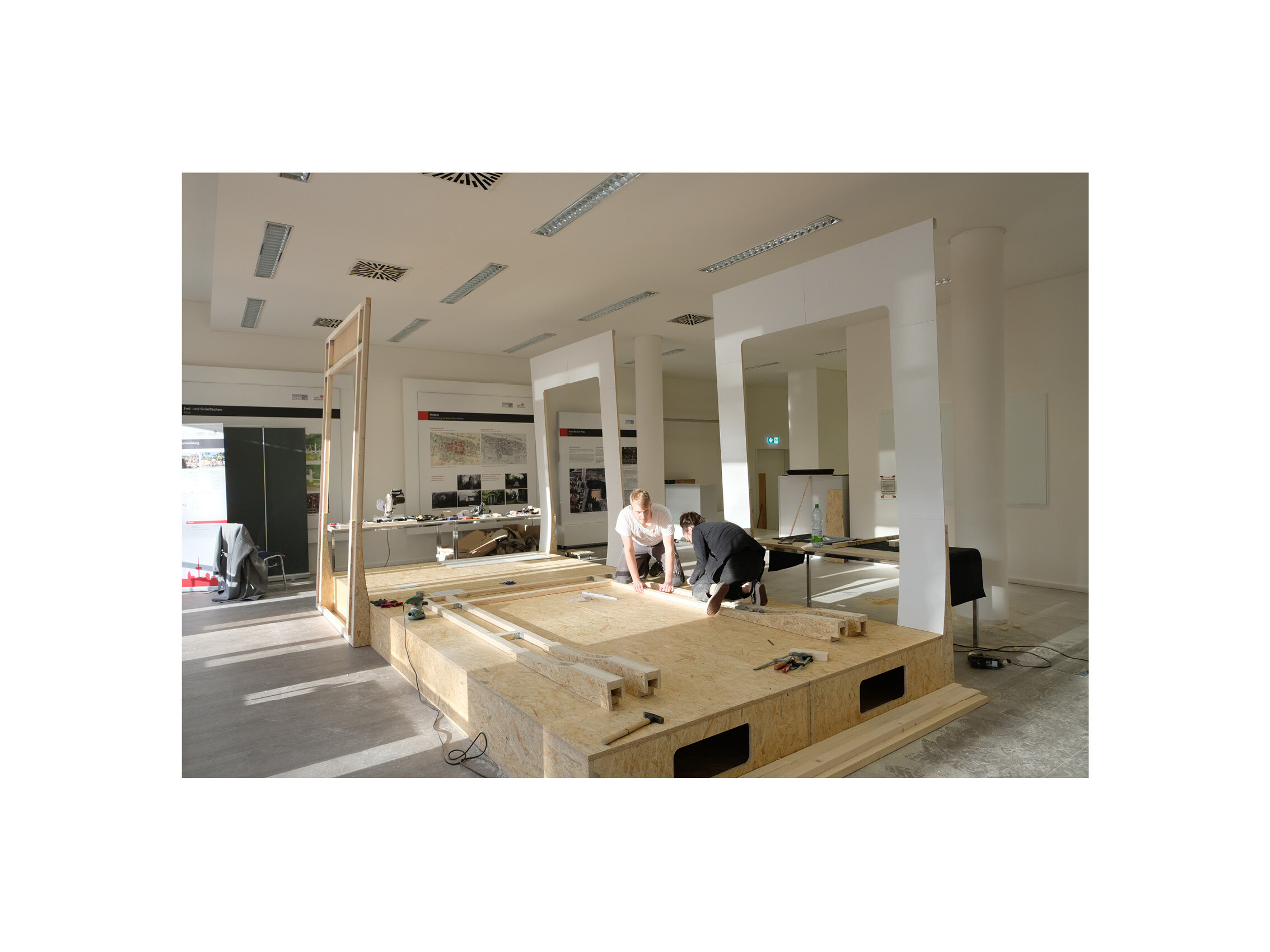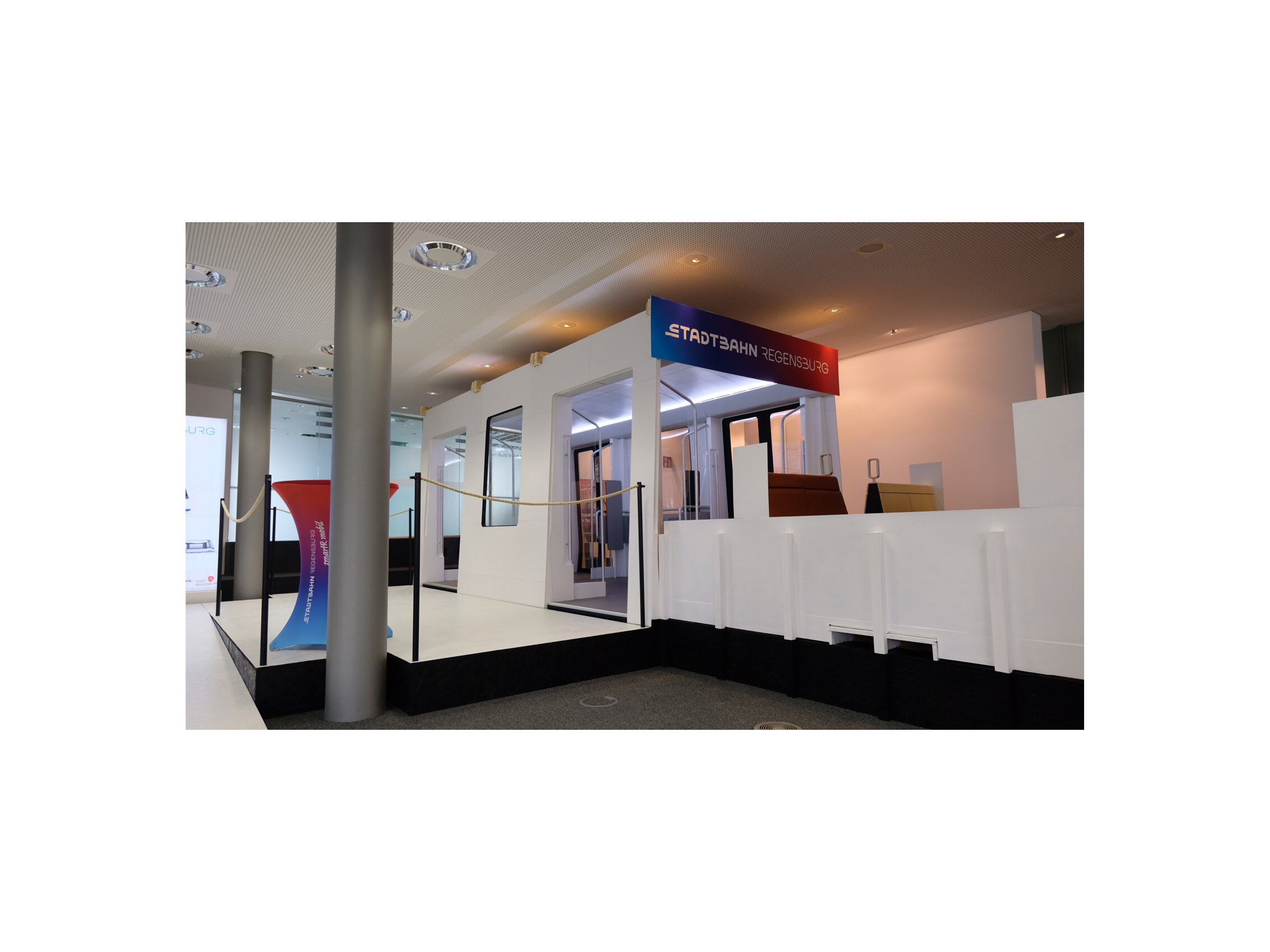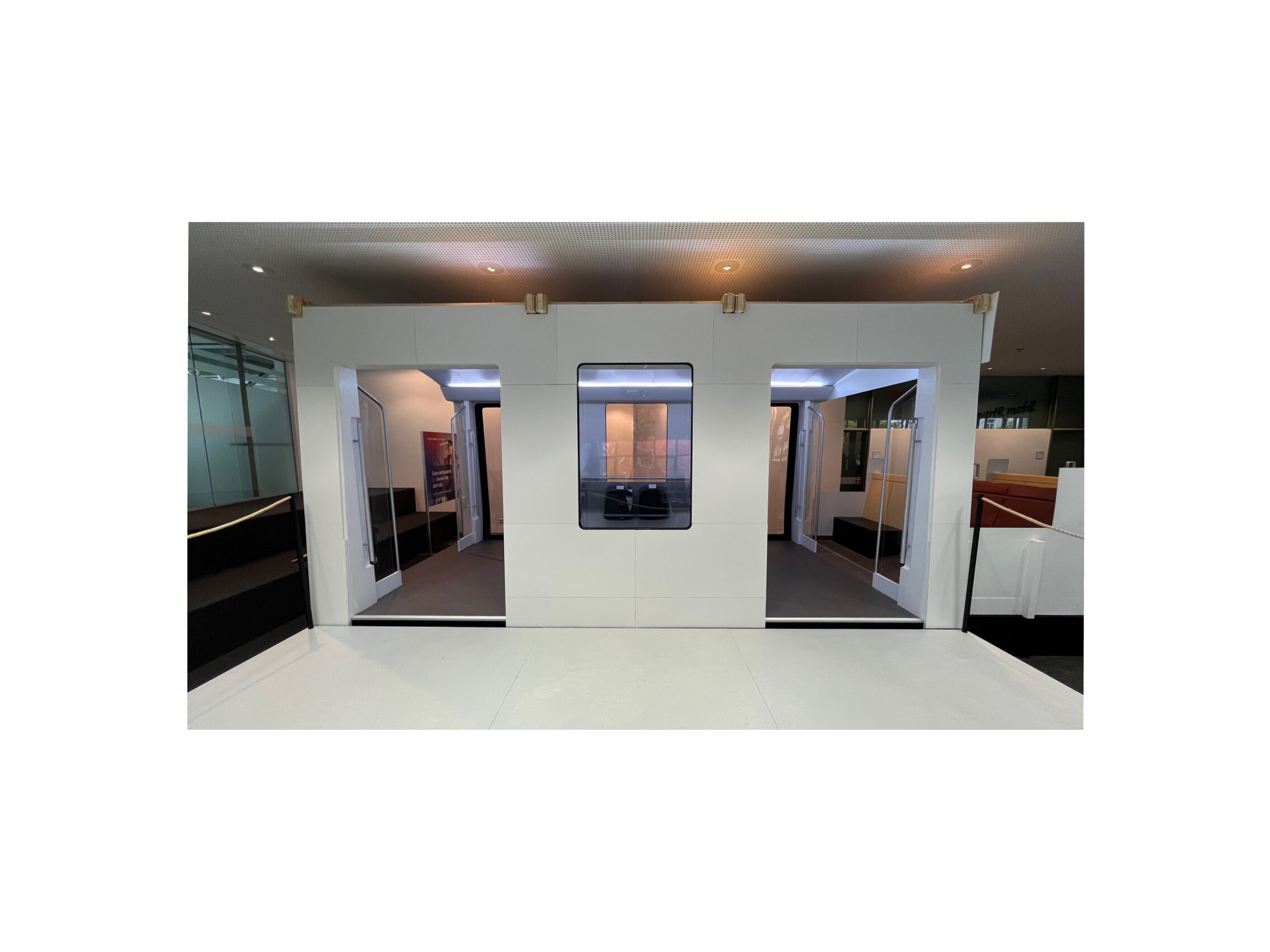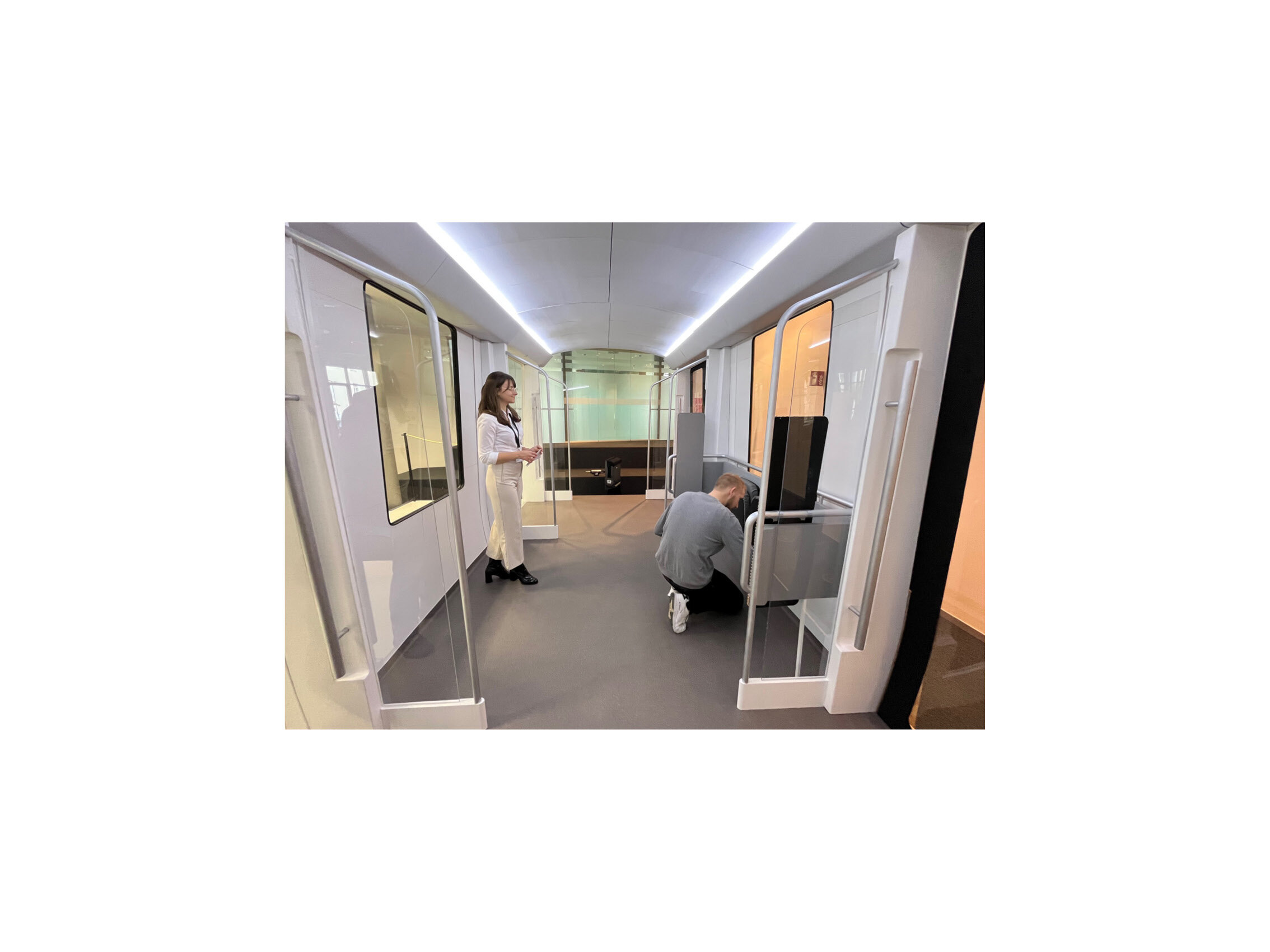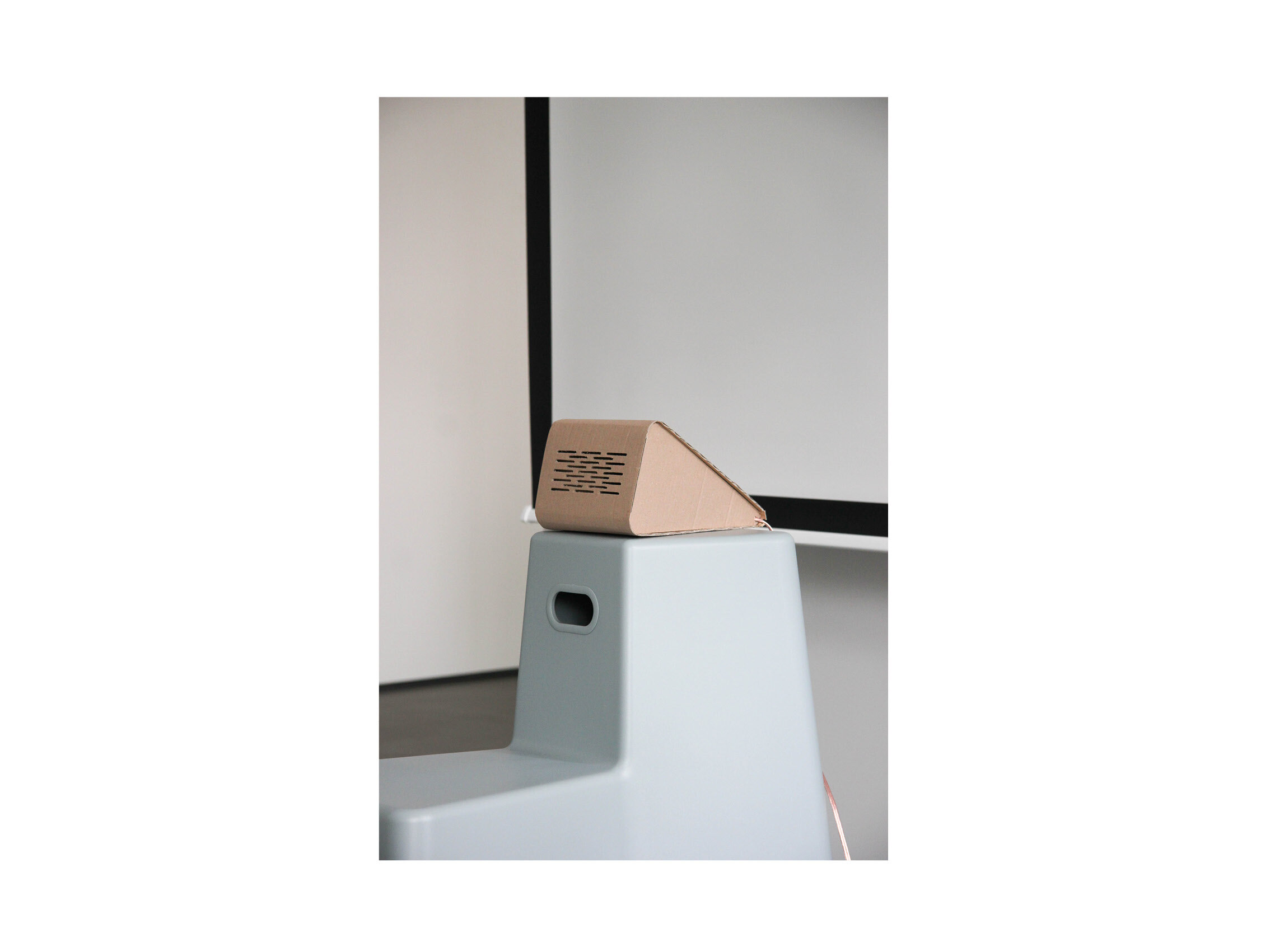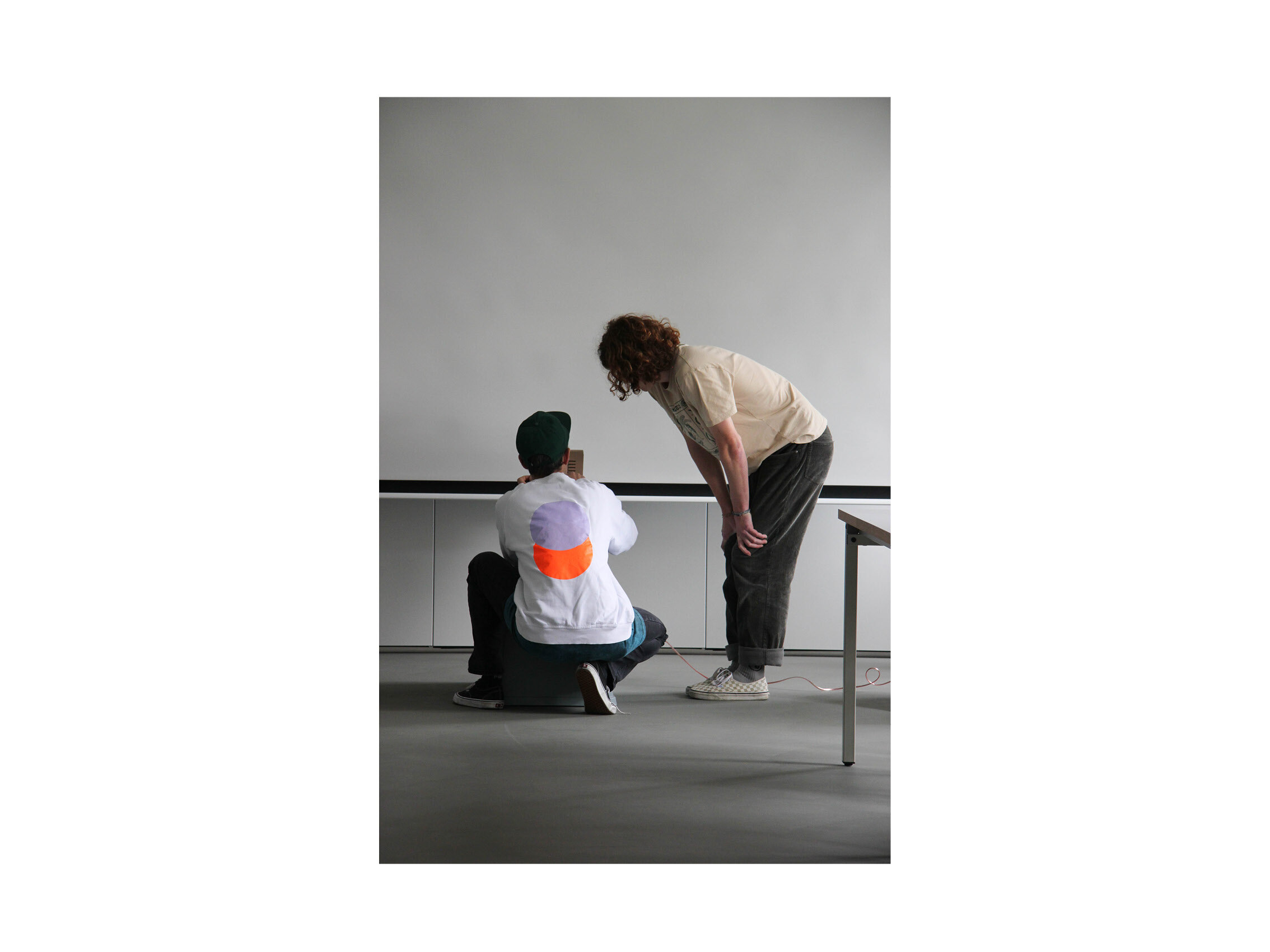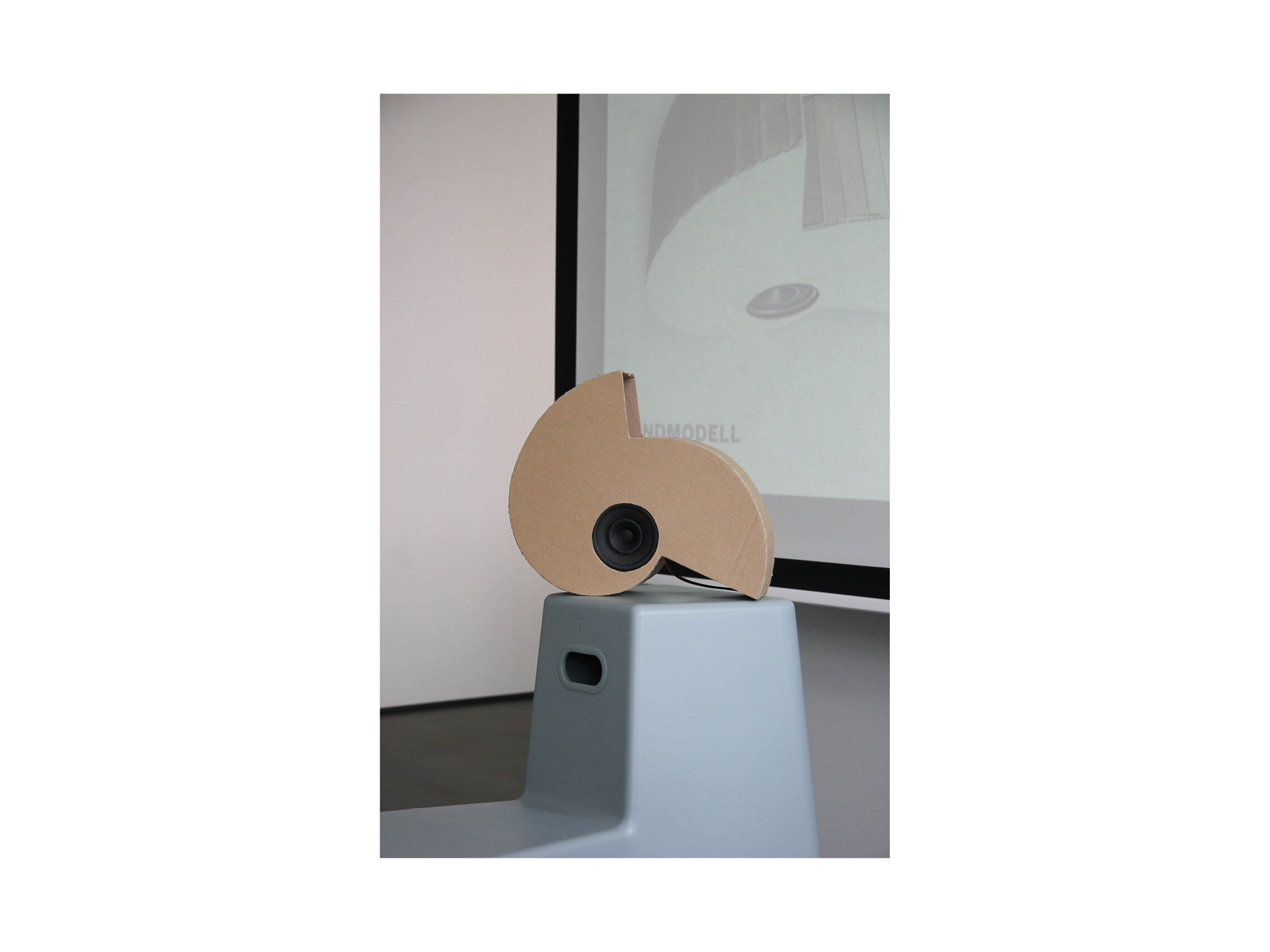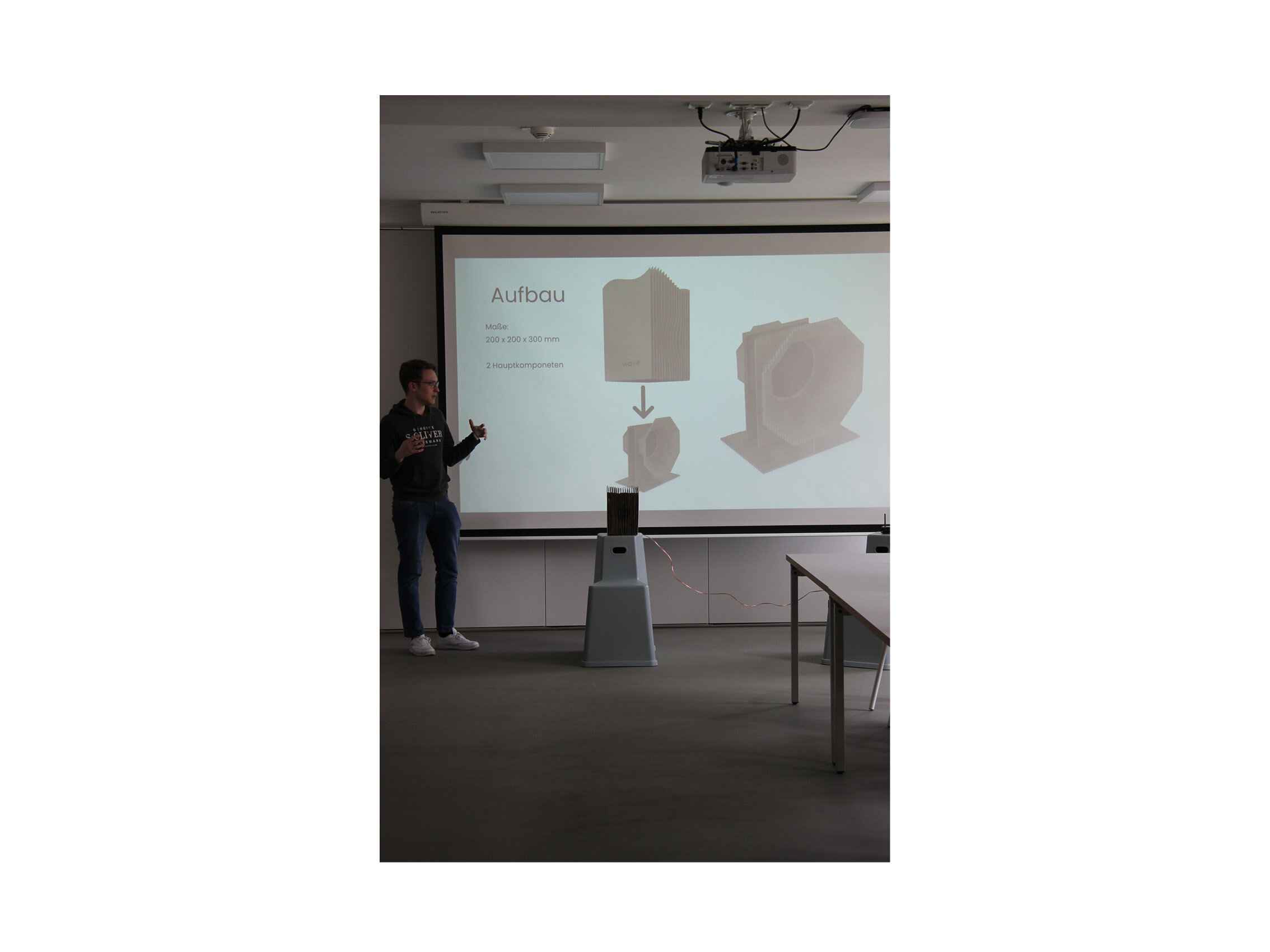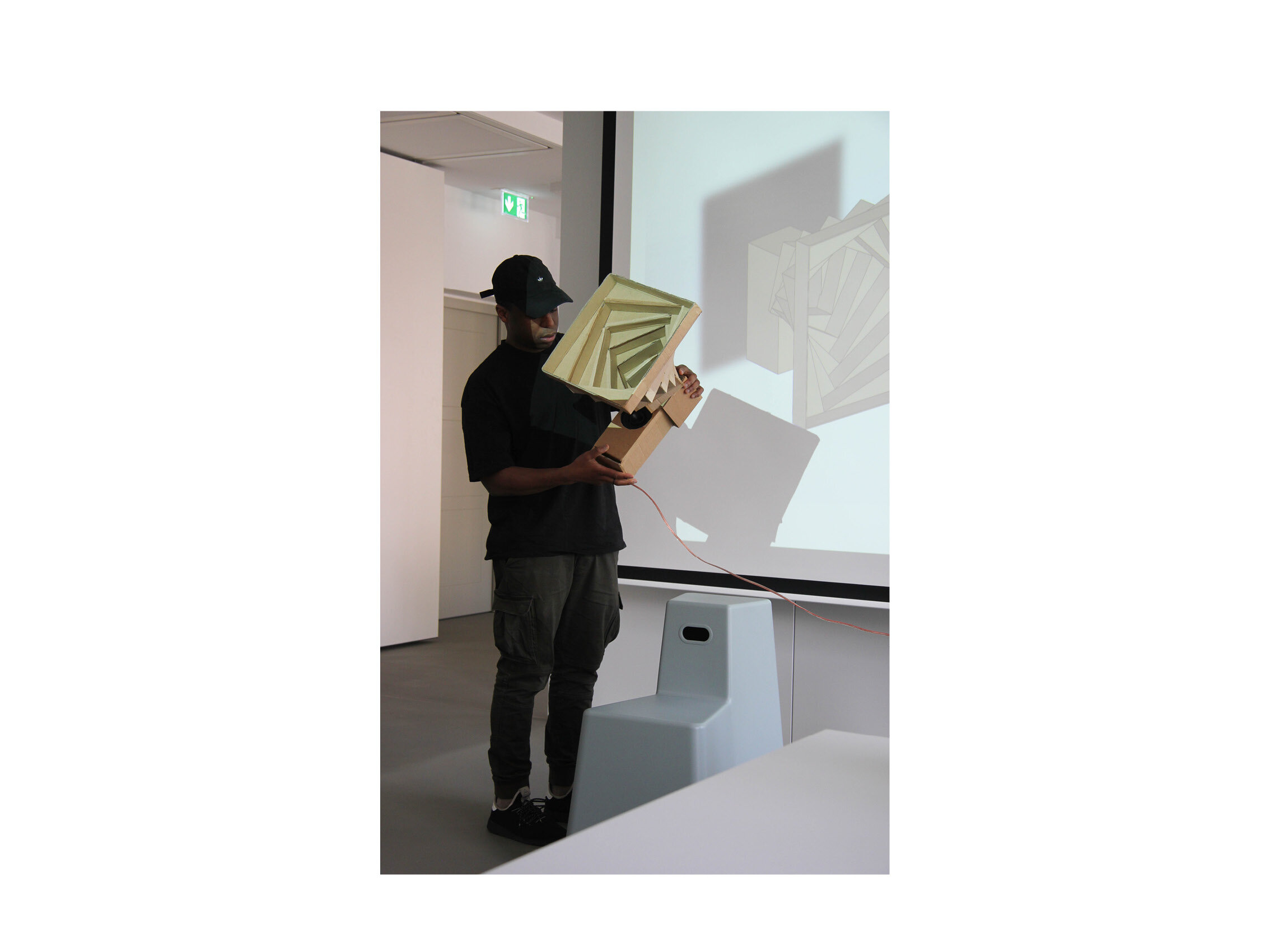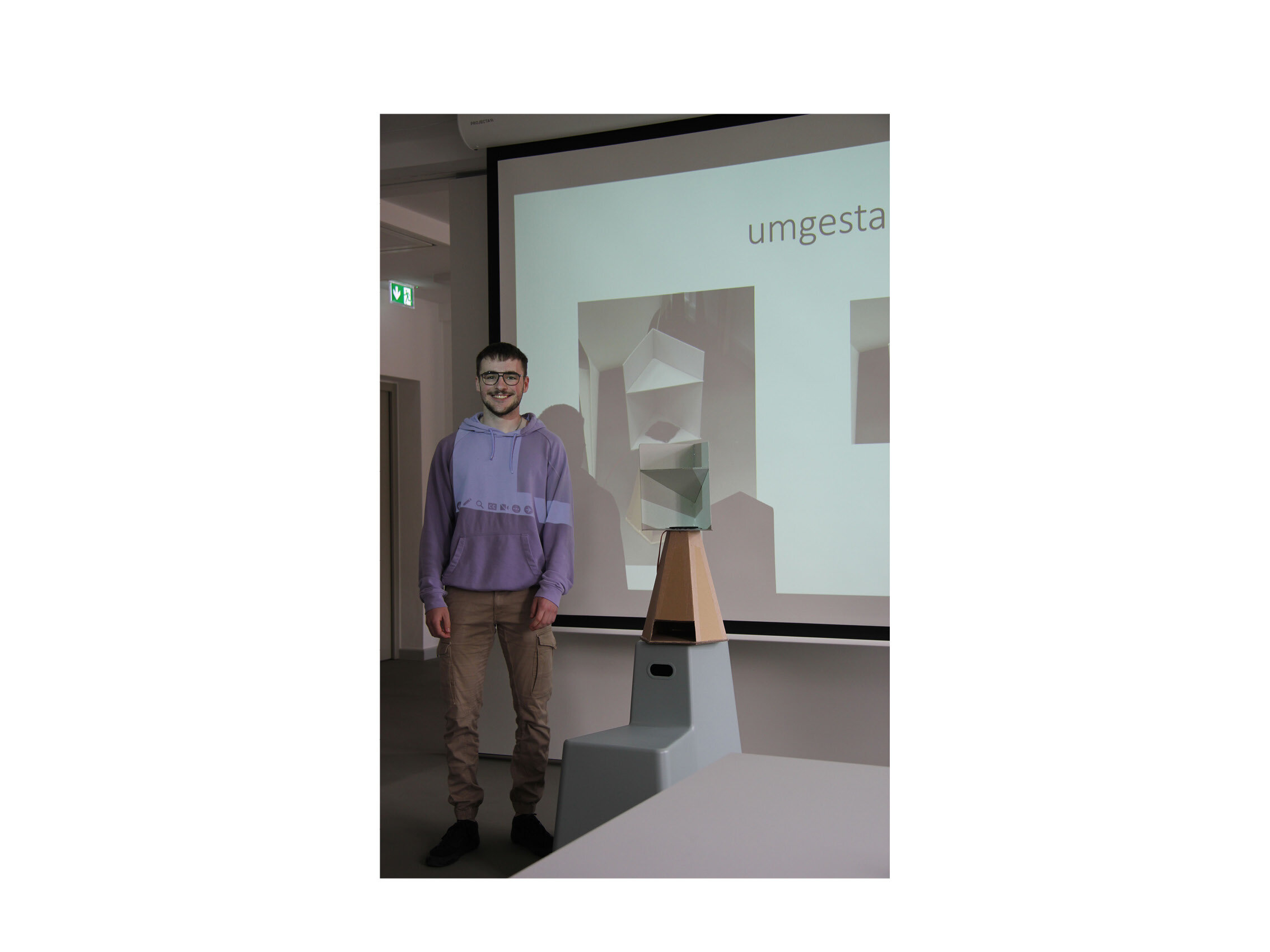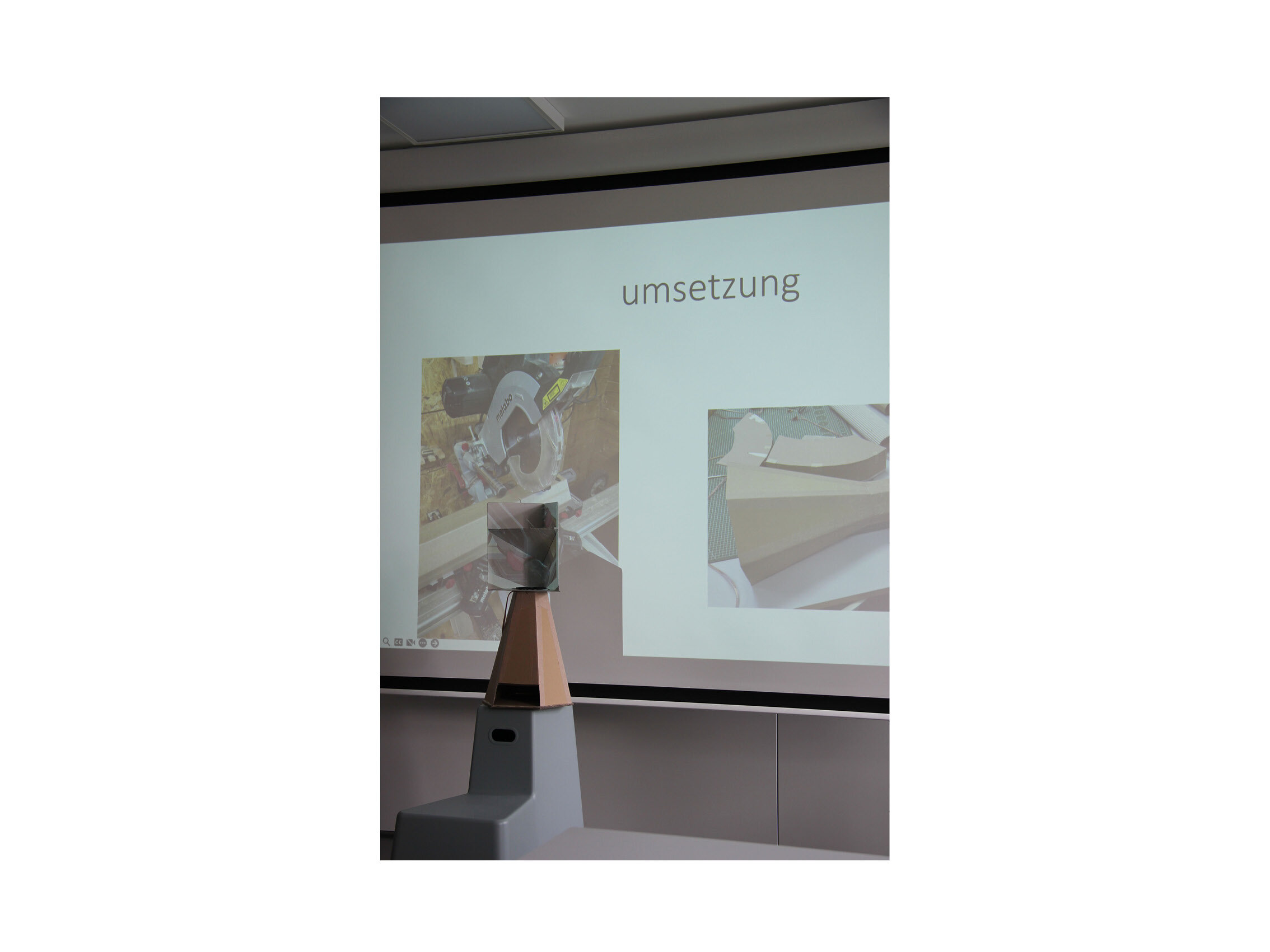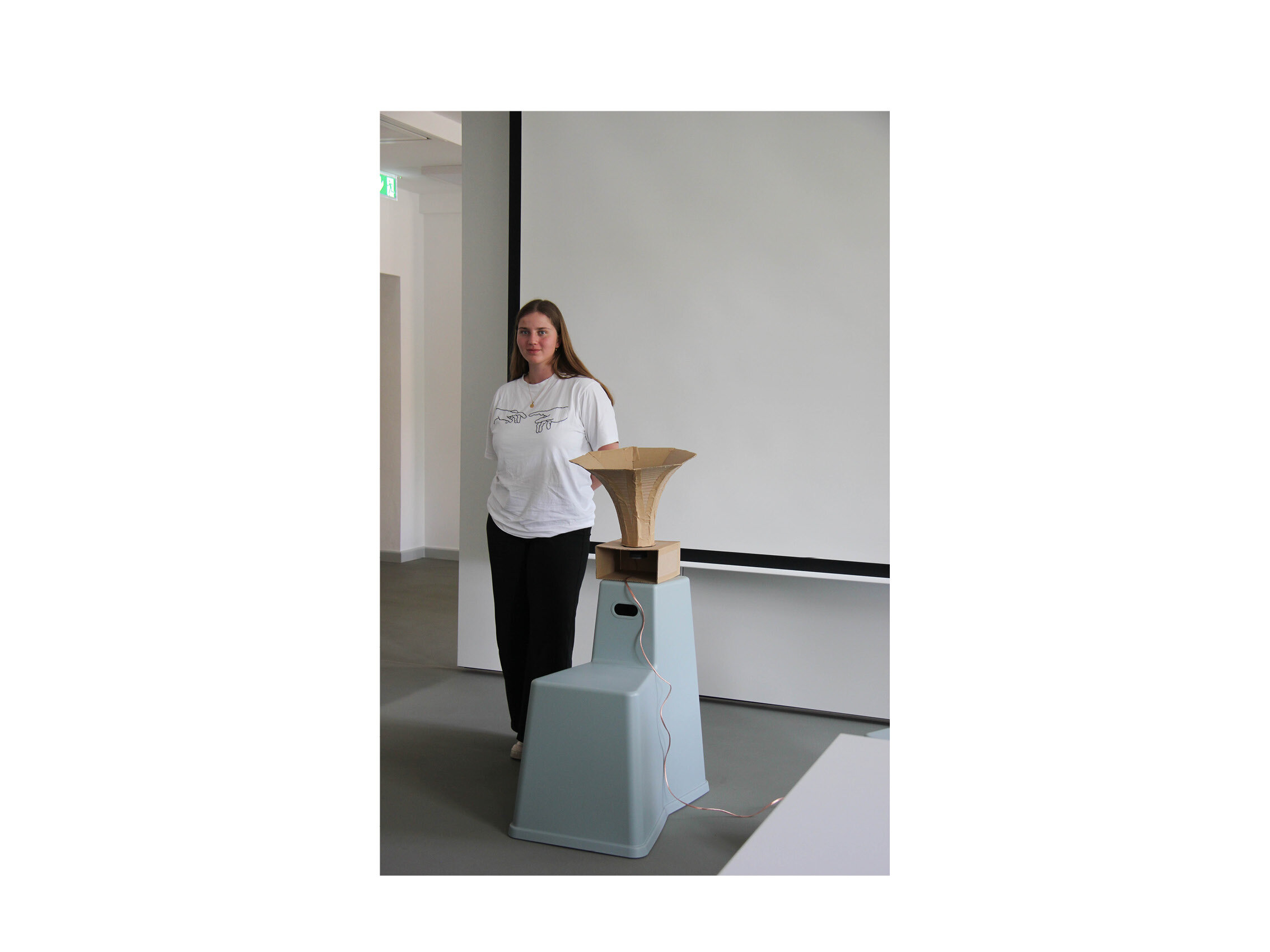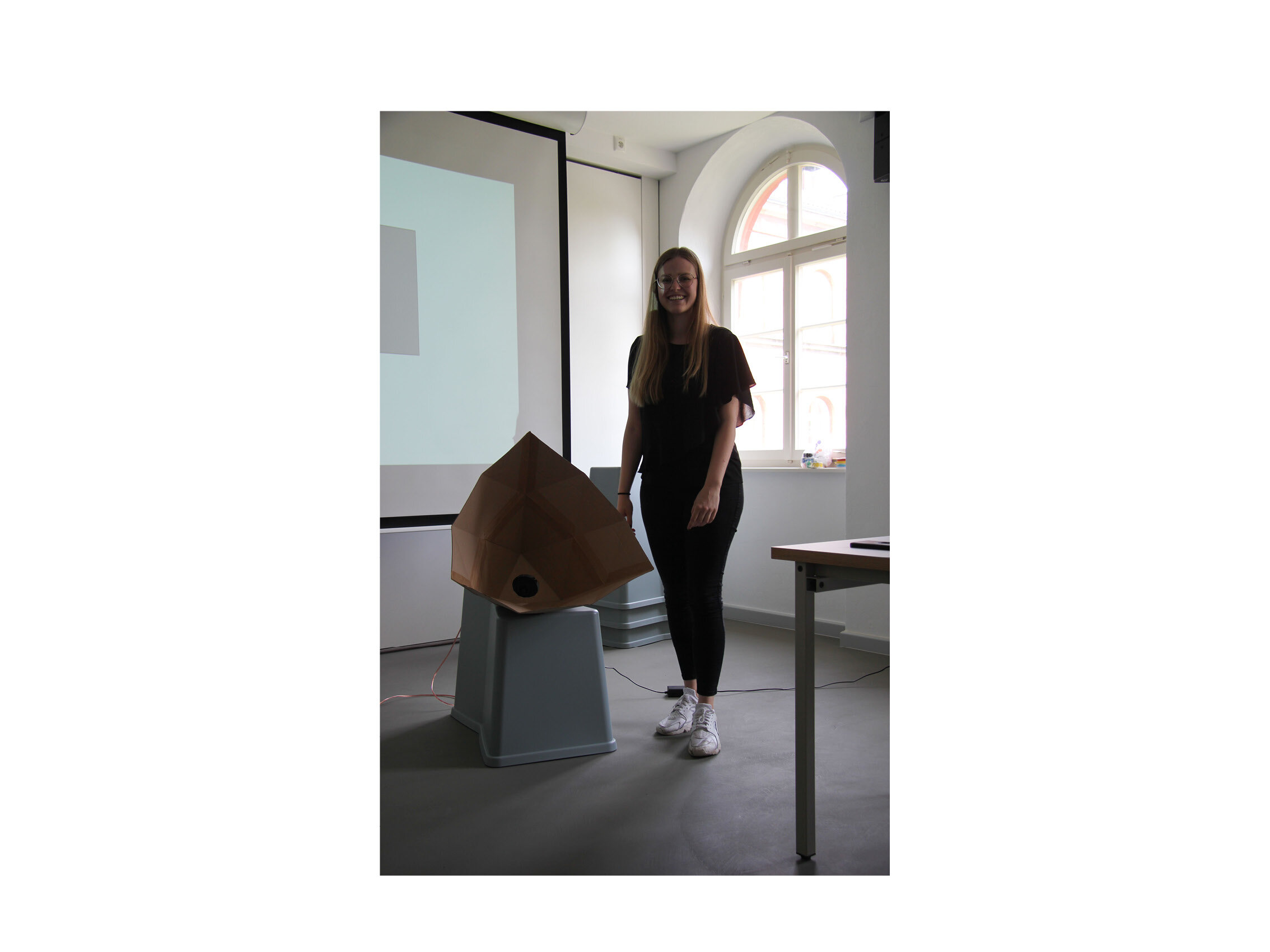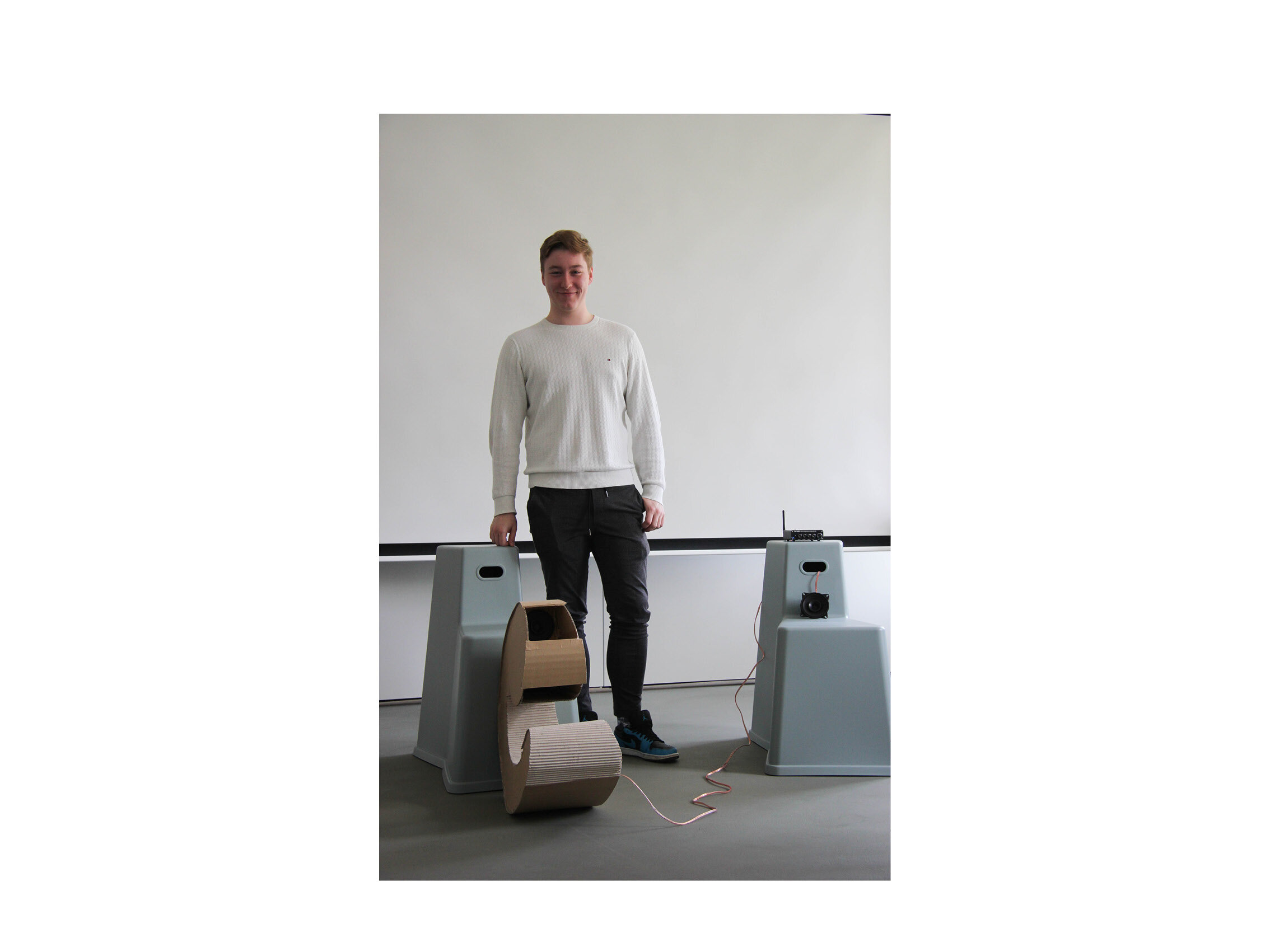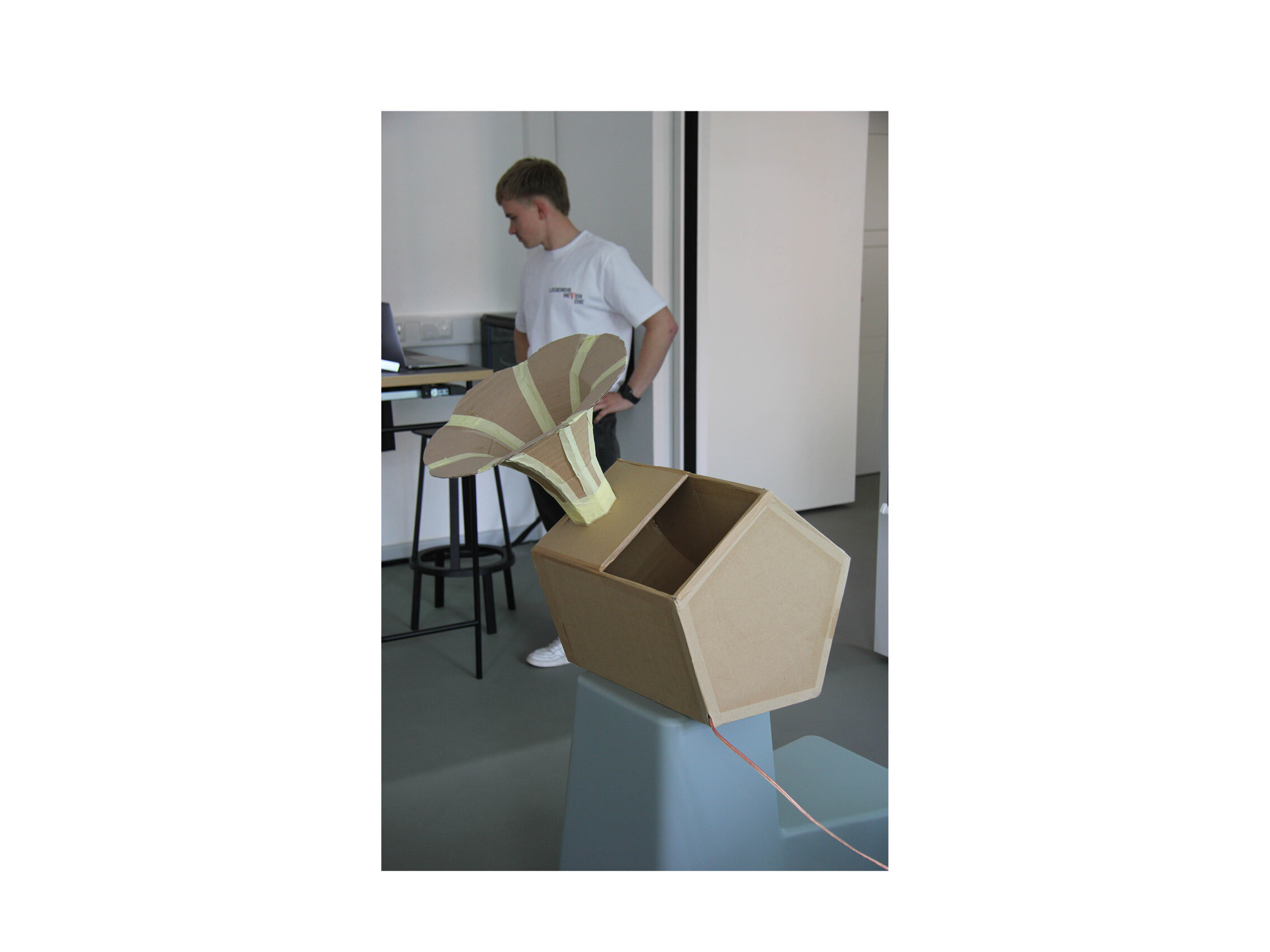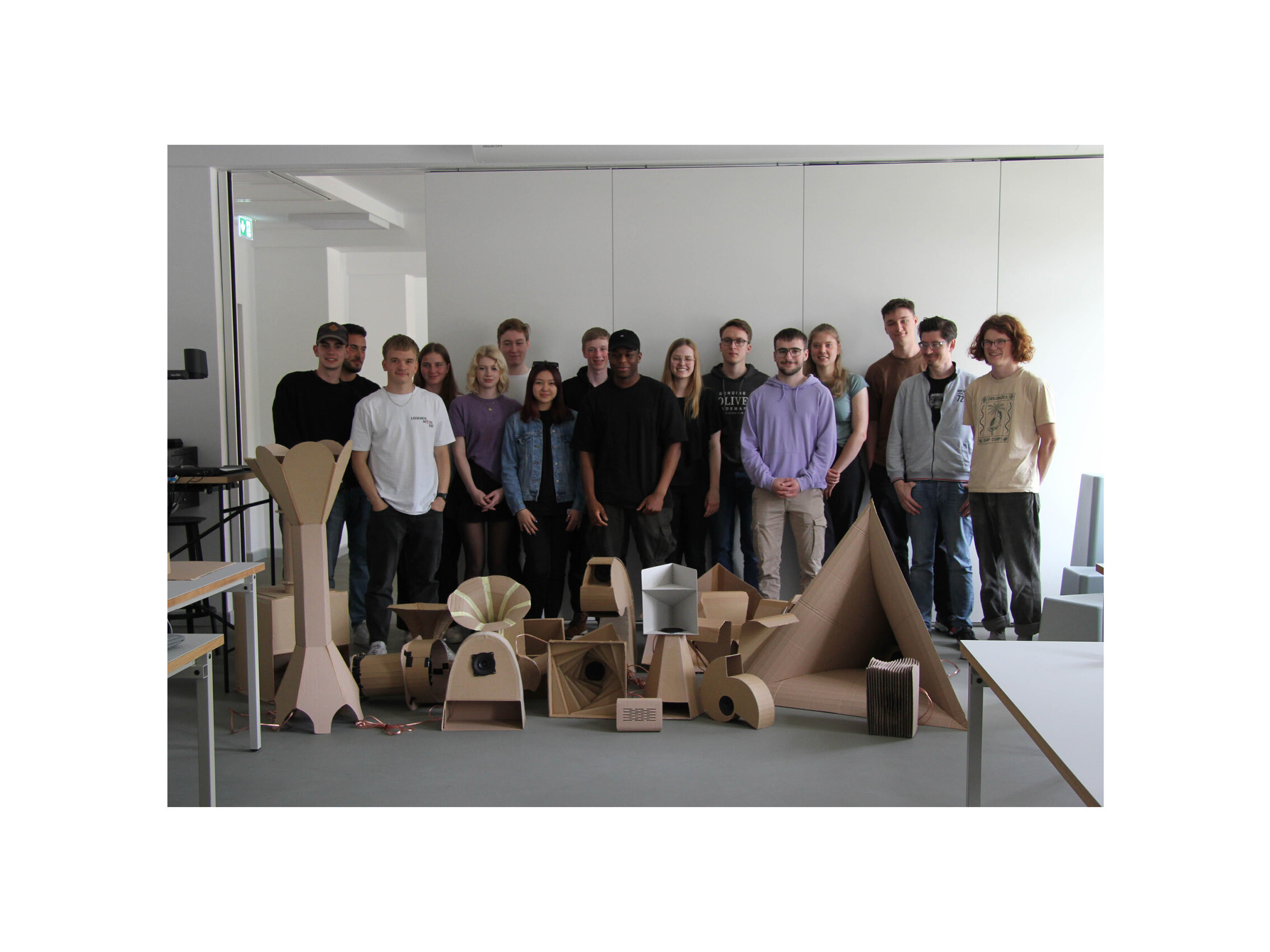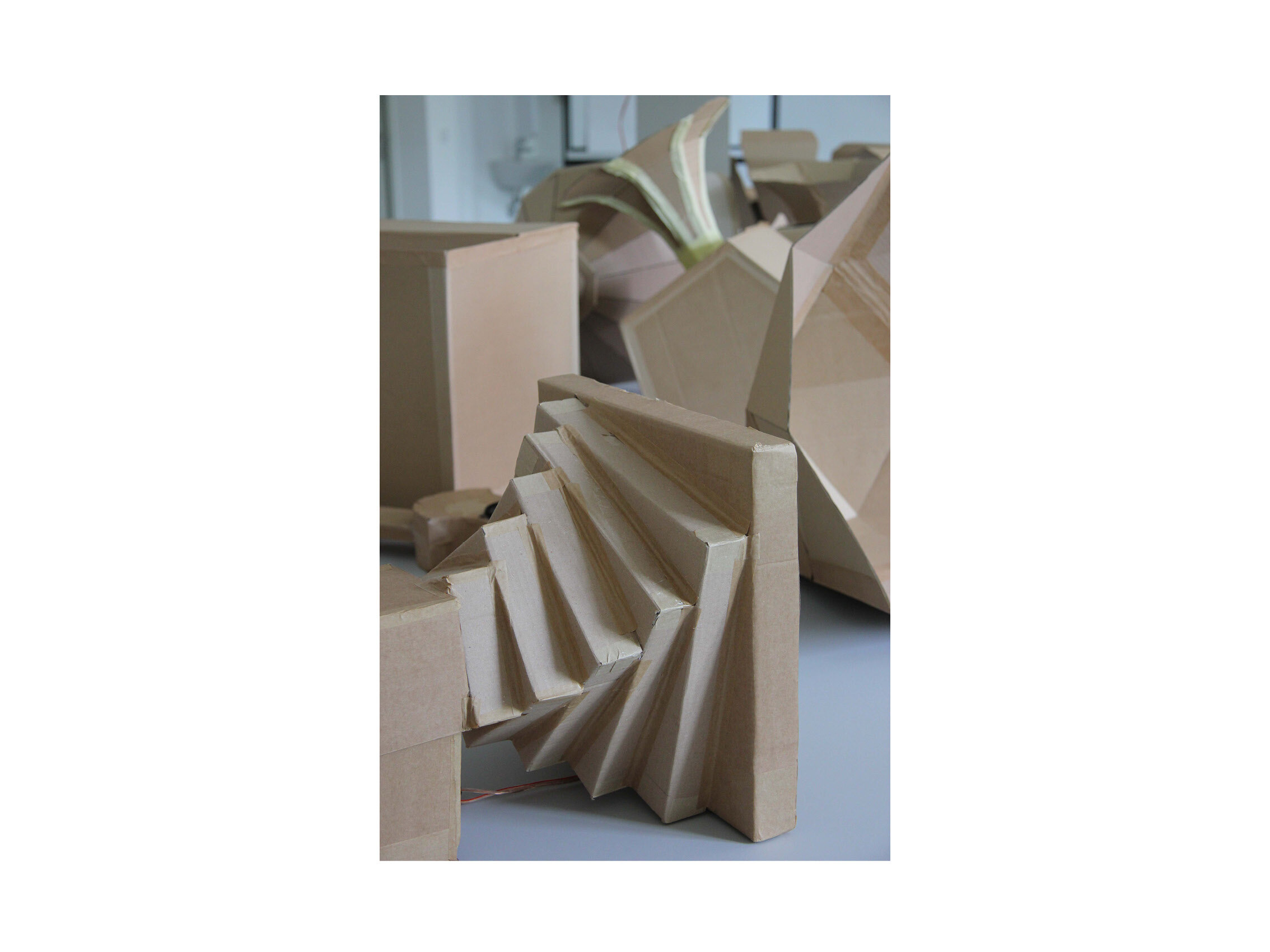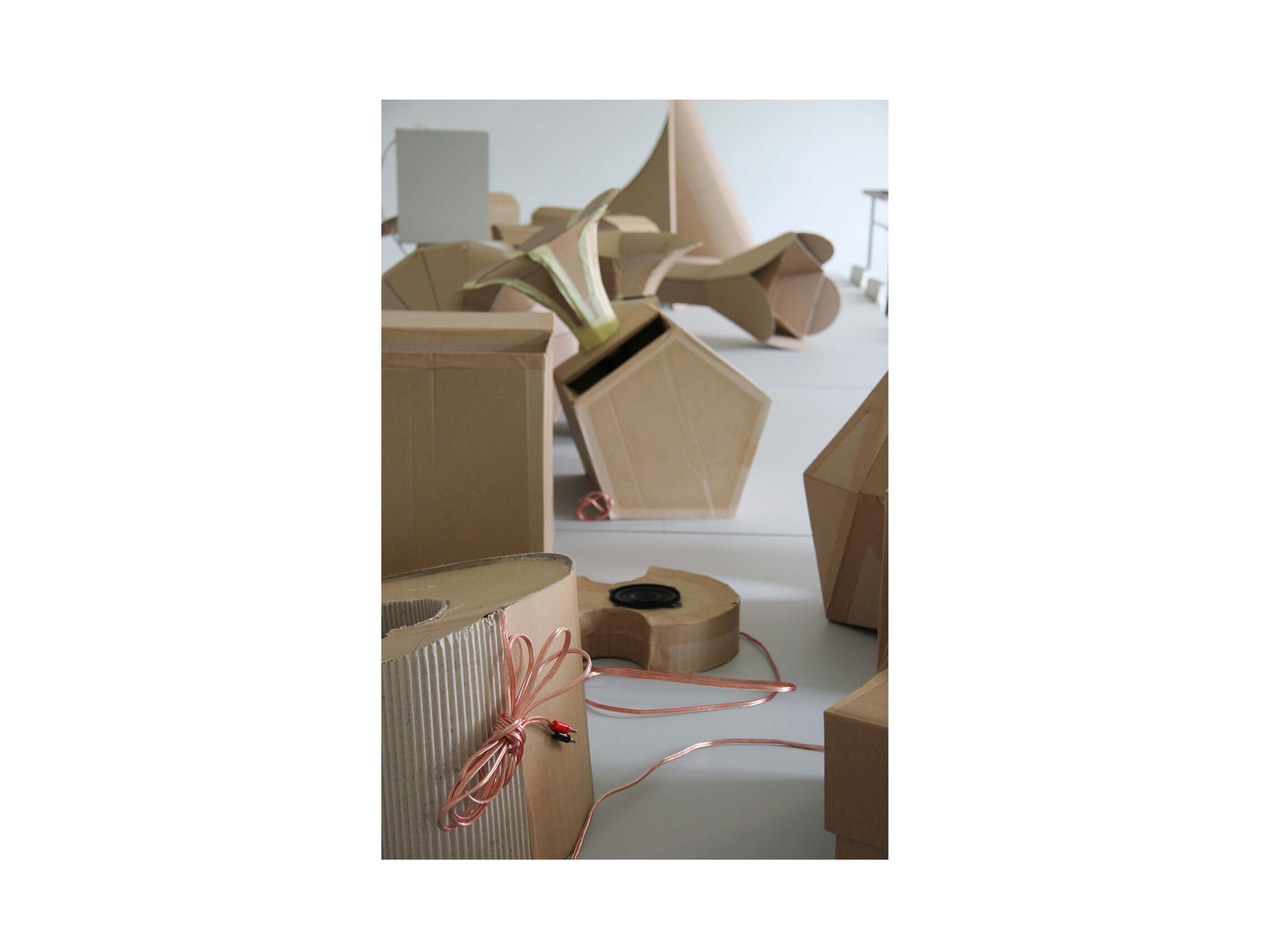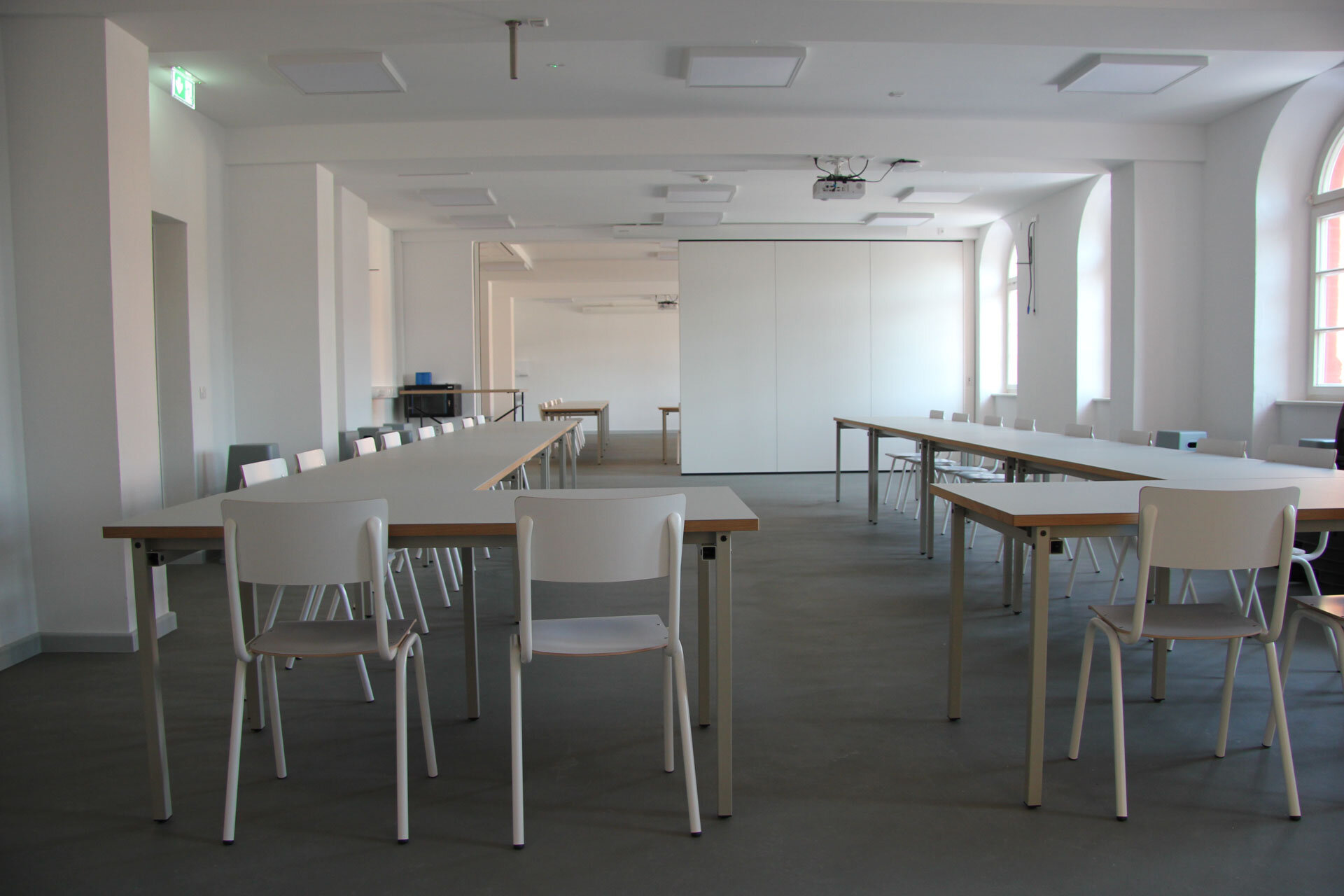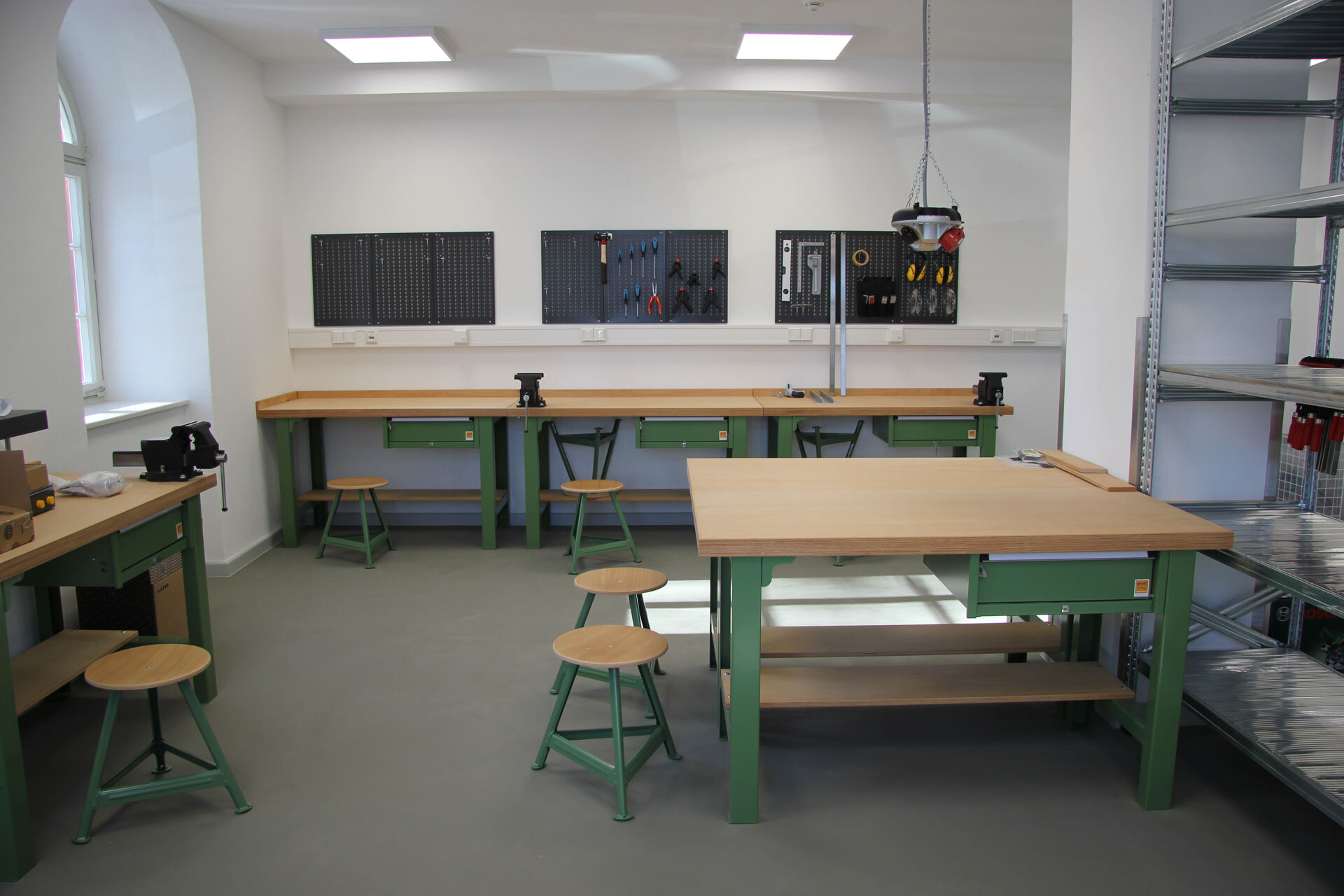Technical Design
Showcase
ABOUT Technical design
Change. Create. Connect - Technology and creativity, intellect and intuition, progress and cycle, man and machine, knowledge and research.
The latest technology labs on our campus form the pillar for innovation and technology with the pulse of time, our teaching content strengthens the second pillar for creative processes and the ability to analyse, understand, question and design connections.
The in-depth knowledge of materials, construction, production, looking at the communication of various interfaces in companies, mastering the common CAD programmes as a daily tool, promoting model building and design studies, conveying further social, cultural and aesthetic aspects and openness to new things form the basis for the study of Technical Design in Deggendorf.
Semester projects with various companies from the industry offer valuable insights into company structures, responsibilities of the various positions, real project processes and a professional approach to future clients. Being able to gain this experience during your studies is a great benefit of the close cooperation between DIT and businesses.
Technical Design is present - 24 hours a day in our everyday lives.
What does a kitchen look like that is also a workplace? How can a child's scale have a second life cycle and grow with it? How can a nesting place for birds be designed?
In the broadest sense, product designers shape the future.
The ability to analyse and consider questions of our time will enable you to help shape how we live in the future, how we use resources, how we consume, how we value things and how we perceive the interrelationships of our lives together.
In terms of tasks, you are at the interface between mechanical engineering and industrial design. You drive the development of industrial products from both a technical and an artistic perspective. As a designer, you think in terms of comprehensive product concepts. You interact closely with other disciplines as part of a team. From the field of engineering, you bring with you the fundamentals of technical product development. In the field of design, you will apply the principles of perception and design theory and bring in art historical and cultural backgrounds.
The Bachelor's degree in Technical Design offers a wide range of opportunities, from internationally active companies to self-employment, good design is increasingly becoming a success and differentiation factor.
The career fields are:
- Product development (production conception, product design, construction) for manufacturers of capital and consumer goods.
- Product designer: as a service provider for companies in a design office or as a freelance engineer.
- Product manager
- Project manager
- Technical sales and distribution
- Technical management and corporate governance
Semester projects
Study projects: ALL ABOUT BIRDS
1. Semester, Fundamentals in Design, WS 2022/2023
This project should schematically depict all aspects of a design process.
Through research on the different bird species, the peculiarities and necessities of nesting aids, feeders, etc., the final design of the product with a final model should be completed at the end of the semester.
Lecturers: Prof. Dipl.-Des. Medugorac, AM Dipl.-Des. Hannah Steinmetz
Results from students:
BIRD LOOP
Cities are getting bigger and bigger, greenery in cities less and less. But where can our native birds still find habitats and food? The bird feeder must evolve to cope with the modern and fast-moving environment of the city. And that is exactly the goal of our project!
"Bird Loop" brings the bird back to the city and makes it easier for them to find food there.
Inspired by the suspension of garlands and the elegance of a tightrope walker, this simple design was created.
The combination of ceramic, cotton rope and cork makes this product sustainable, robust and easy to clean.
The design focuses on functionality. Because the bird feeder with its hidden silo inside allows easy handling. The food is filled in at the top and can be picked out of the lower opening. Afterwards, the opening at the top can be closed with the cork and the food can be protected from wind and weather.
The feature that makes the bird feeder stand out is its adaptability to small crevices and spaces, which are common in urban areas. The reason for this is a variety of hanging options. These variations are made possible by the tabs on the sides. For example, several silos can be combined individually in different colours. The shape additionally draws a parallel to the name "Bird Loop".
Students: Lena Hauzenberger, Feline Zintarra, 1. Semester, WS 2022/2023
Schwalbenschwanz: The bird house to put together.
First of all, we dealt with the problems of birds, bird feeders and nesting boxes, and the problem of cleaning nesting boxes quickly came to our attention. In principle, this should be done once a year. However, cleaning often turns out to be difficult.
Our solution is the craft as well as linguistically appropriate swallowtail principle. We have applied this principle to our entire bird house. Thus, the bird house can be assembled and disassembled in a short time. During assembly, the back plate is first screwed down, either to the tree or to a wall.
Then the side and front parts are put on and fastened with safety pins. During cleaning, the locking pins are removed and the front part is taken off, leaving the back plate mounted. Sustainability must also not be neglected in such a nature-oriented project.
Thus, the front is made of Corian, a solid surface material that is characterised by recyclability and durability. The rest is made of ecological European spruce wood. Thanks to the dovetail principle, our bird house does not require the use of adhesives or screws during assembly.
This makes the bird house more degradable and therefore more ecological.
Keeping a possible industrial production in mind was also a concern for us when designing our bird house. The parts made of wood can thus be efficiently manufactures from board materials completely with a CNC milling machine.
Students: Nik Seibold, Benjamin Zimmermann, 1. Semester WS 2022/2023
Project: HORSCH
3.-7. Semester, WS 2022/2023
For and with the project partner Horsch Landmaschinen, based in Schwandorf, the lighting unit of the various agricultural machines used worldwide was redesigned.
The difficulty here was to develop an independent design language within a strict set of guidelines for the safety and durability of the product.
Lecturers: Prof. Dipl.-Des. Medugorac, AM Dipl.-Des. Hannah Steinmetz
Student projects:
Students: Samuel Kügler, Florian Putz, 5. Semester, WS 2022/2023
This design takes lighting design and the integration of safety-relevant components in agricultural machinery to a new level. The originally straight profile, to which the lighting and signal unit is attached, is bent to the left and right to create enough space for the signal foul above the profile. In this way, legal requirements and installation space restrictions are complied with, which are caused by various folding mechanism on the machines. Above all, the fold offers aesthetic added value and helps to distinguish Horsch machines from the competition at first glance. To enhance the dynamic effect, the signal foil is also kinked, which contributes to a striking overall look.
Tail, btake and indicator lights are elegantly inserted into a recess in the profile. The strip-shaped all-in-one solution, which is available as a prefabricated part, ensures a simple and stylish appearance. It also provides the opportunity to attach the side reflector to the open end of the profile. Normally, the cables would come out here, which go to the three chamber lamp mounted on the outside. The side reflector thus forms a clever end to the profile. To ensure adaptability to different legal requirements, the licence plate holder and speed sign are designed as independent modules. They can be mounted independently of the lighting and signalling unit according to need and requirement. Deliberate care has been taken to ensure that the metal plates that are attached to the profile are of a different colour. This makes the elegantly curved red profile stand out more.
Students: Stephanie Meier, 7. semester, Michael Welser, 3. semester, WS 2022/2023
"This semester's project was to re-satlte signage for agricultural machinery, which is subject to many standards, which in turn vary depending on the exporting country.
A difficult task, which we first approached in a rather free and abstract way.
At first, we spent some time thinking about what we associate with the current signage in the context of the machine. Pretty soon we got stuck on butterfly wings.
These, thought of as an approach to signage, led us to the idea that we worked on throughout the semester: to create signage with spatiality, planes and contrast by "folding" or materially using edges of metal sheets.
In the next step, we worked a lot on the right shape by folding paper to create surfaces for the reflective foil, lighting unit, reflector components and number or speed sign. We stopped at the shape of the equilateral triangle, as this can already be found in the reflector triangle and also in road traffic with a signalling effect.
Now followed an intensive examination of the relevant standards and requirements. After several iteration cycles, we had to make a few compromises in order to meet these requirements in their entirety. However, this was just as much our demand, as it reflects our understanding of good design.
Now CAD models and photorealistic renderings were created in parallel, which were continuously updated depending on the degree of implementation. In addition, we included production-related topics such as the edging and punching of sheet metal.
As a conclusion of the project, we implemented our design as a 1:1 model, which consisted of lasered and subsequently painted plastic and wooden parts as well as original attachments (lighting unit, reflector foil, etc.)."
Study project: ETERNIt
3.-5. semester, WS 2021/2022
This project with the project partner Swiss-Pearl revolves around the cosmos of Eternit in connection with urban gardening. The material Eternit can do many things, contrary to the well-known and persistent image of the one-dimensional fibre cement panel. The harmlessness for health, the possibilities of form and thus the application of Eternit will be clarified through the connection to nature and food.
Lecturers: Prof. Dipl.- Des. Medugorac, Dipl.- Des. Alexander Rybol
Green partitions
Students: Valentin Kasparov, Lucas Widera, 5. semester, WS 2021/2022
"With our room divider "Eternit Linie" we wanted to reinterpret the well-known flower pot Balconia by Eternit and use it to bring nature closer into the human sphere.
By taking the Balconia pot as a base element, we were able to design multifunctional, modular & fluid constructions for our frames from some simple rules and several iterations. Our two designs, Line 6 and Line 12, have different use cases. Line 12 can hold three pots and Line 6 can hold one pot. Line 6 is a multifunctional rack that also functions as a clothes rail, clothes rack and pinboard. Line 12, on the other hand, is a heavier frame that is used purely as an indoor garden.
We present our designs as an answer for the private customer who wants a little more green in the home, as well as companies who want an elegant, easily convertible room divider. Designing the interior to be lighter, healthier and more sustainable is a topic that will be around for a long time. "
Bachelor & Practical semester
Bachelor thesis by Tobias Ritthaler, WS 2021/2022
Lecturers: Dipl.-Des. Kostas Medugorac, Dipl.-Ing. (FH) Bernhard Maderer
Concept, design and development of a light as an accessory for the bulthaup b3 system
An essential component of the b3 kitchen line at bulthaup is a wing light that functions as task lighting in the niche area. The aim of the work is to revise and replace it with a contemporary design and lighting concept and a modernisation of the technology.
Before moving on to the specific elaboration of concepts, it is fundamental to consider lighting theory in addition to a requirements analysis. In the parallel market analysis, the current trend of "Human Centric Lighting" was increasingly noted. With the "ambient light control" lighting concept based on this and the static "Ambient Light" and "Focus Light" lighting scenes with circadian lighting control, a new bulthaup lighting world is generated that offers a holistic emotional lighting experience that is perfectly attuned to people and can be individually adjusted to suit their needs across the room.
The resulting "b light" luminaire embodies the natural dynamic form of the medium of light intelligently with modern, future-proof technology in an aesthetic design that harmonizes with the b3 line. The sensuality of high-quality materials is cleverly conveyed on an emotional level through functional, unadorned forms in line with the holistic design that is synonymous with bulthaup. The floating light wing with its organic, backward-sloping tension line pays homage to Herbert Schultes and his design of the original wing light. By detaching the functional box and thus creating a distance to the rear wall, the entire appearance of the luminaire appears much lighter, more filigree and self-confident. The reduced and deliberately designed clear and straight form language with precise details on the edge and fine radii brings about a formal integration into the overall product language of the bulthaup b3. This and the human-centred approach to lighting make it possible to place a product that is in demand on the market and replace the existing light.
Practical semester project by Jessica Gross and Lukas Haslinger, summer semester 2023
Lecturer: Prof. Dipl.-Des. Kostas Medugorac
1:1 modelling of a part of a light rail carriage of the Regensburg light rail system
The aim of the practical semester was to build a life-size model of the multifunctional area of the Regensburg light rail system based on a preliminary design study of the Regensburg light rail system. The multifunctional area is part of the first or last carriage of the railway and offers its passengers with mobility aids, such as pushchairs, wheelchairs and rollators, a barrier-free mobility solution. By building the area, using given dimensions and CAD files, the usability of the railway was to be tested and any need for changes to the design identified and implemented. The most important requirement for the model was a modular structure in order to be able to guarantee transport to another room. It was also necessary to use building materials that were available on the DIY market, which is why creativity and the ability to improvise were required in some places. After completion, the passenger compartment was tested by the Inclusion Advisory Board and problem areas were documented. The model was presented to the public at a light rail exhibition in October 2023 and citizens were able to walk through it.
"The collaboration with the technical design students from Deggendorf was an enrichment for the entire project and made the construction of the mock-up possible in the first place. The combination of technical expertise and design skills provided important impetus."
Frank Steinwede, Head of Strategic Public Transport Planning, Stadtwerk Regensburg.Mobilität GmbH
workshop
Model making - Cardboard - Presentation techniques
2nd semester, summer semester 2023
Loudspeakers and acoustics combined with the generation of fast, precise models from cardboard - this combination was the basis of the two-day model building workshop.
Many points were taken into account here - the rapid development of a design idea with the discussion of how form conducts sound waves, the planning of the production of the designed form and then the important step in the implementation and testing of the concept.
The students all had a small loudspeaker and cardboard at their disposal for this purpose. The cardboard material was deliberately chosen to demonstrate the many ways in which a model can be created quickly and inexpensively, thus introducing the students to the important interplay between digital and analog in the design process.
Despite a full curriculum, fourth semester students also participated.
In the final presentation, the direct comparison of the loudspeaker with and without the "cabinet" was presented - with surprising and revealing results.
Lecturers: Dipl.-Des. Philip Andris, Dipl.-Des. Hannah Steinmetz
Atelier & Labs
The newly furnished studio in the Stadtpark in Deggendorf makes many things possible that promote and challenge teaching.
The premises appear to be a suitable place to be creative, to interact, to test, to think, to exchange, to plan, to build, to create, due to the high-quality renovation, the curated furnishings, the division of the rooms and the openness in use.
Material, form and colour are made comprehensible through the environment, cultural context. the interplay of old and new is made visible through the conext of the historic building, and further development in the process is encouraged throguh the possibilities of the workshop.
The rooms offer space for imparting knowledge through the two lecture rooms, which can also be used flexibly as a workshop area.
The studio with a small photo studio area and kitchenette creates space for research, implementation, lingering, exchange and for personal responsibility.
The workshop with machines for wood, metal and plastic processing, for deep-drawing and casting - all on a small scale - enables the realisation of quick ideas and well-planned prototypes.
Working with the different materials and understanding their characteristic properties expands the students' knowledge and enriches the design process.
The existing DIT labs with machines at the cutting edge of the industry's processing techmiques offer the opportunity to realise more complex products at a high level.
From the 3D printer to the laser cutter to the CNC five-axis milling machine and injection moulding machines, the possibilities are manifold.
Insides
Statements from our students
"With the technical design degree, I have found the perfect interface between creativity and technology.
The most beautiful experience so far and at the same time the greatest learning was to experience the process from the project presentation by the lecturers to the final presentation of my own, finished product with all the intermediate steps."
Philipp, 2. Semester
"My learning so far is, design can seem simple at first glance, but on closer inspection, the simplest things are often the ones that are the best thought out.
If you are interested in mechanical engineering but I think the course is too theoretical and are looking for something more practical, Technical Design is the right course. An interest in aesthetics and design, and the will to improve things, whether visually or practically, should be present."
Jana, 2. Semester
"Since I am interested in both natural sciences and creative design work, I chose Technical Design. This has turned out to be a very good choice.
Through the intensive and holistic examination of various topics in the semester projects, I learned to approach things in a more differentiated and structured way. Furthermore, I have been able to develop personally through, among other things, the frequent giving of presentations and contact with external project partners."
Samuel, 6. Semester
